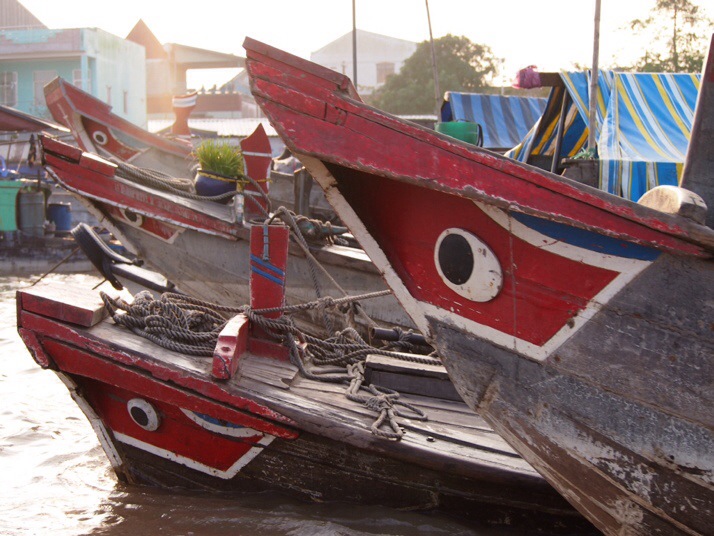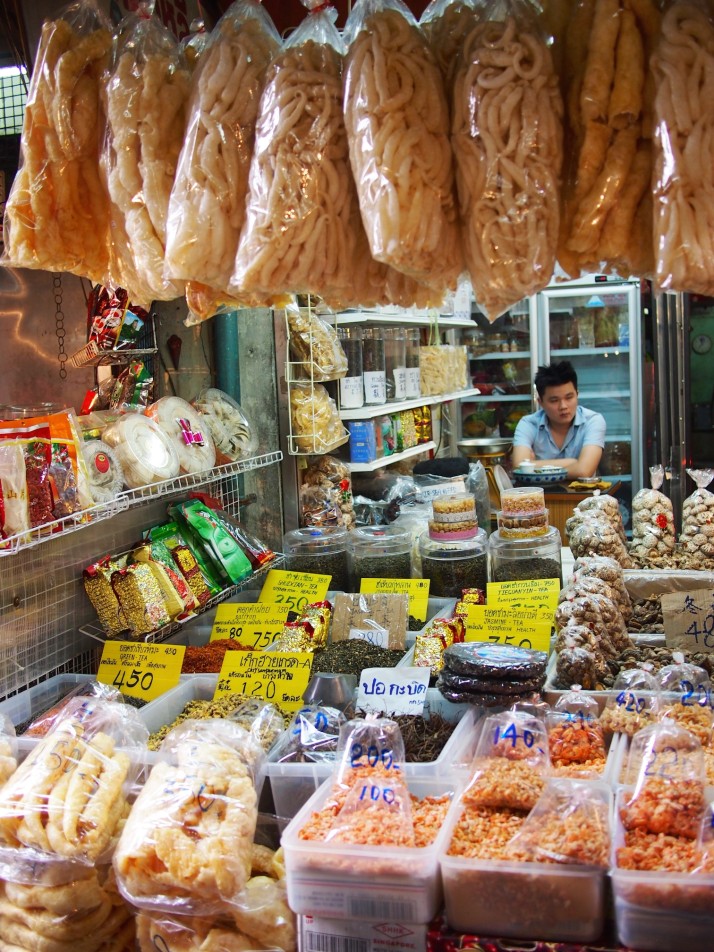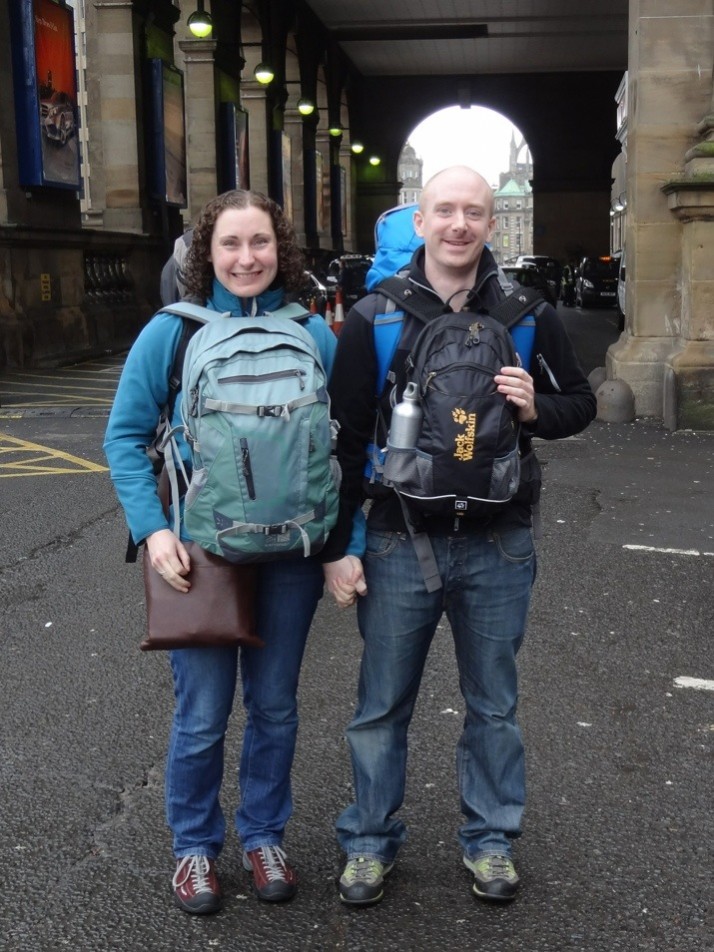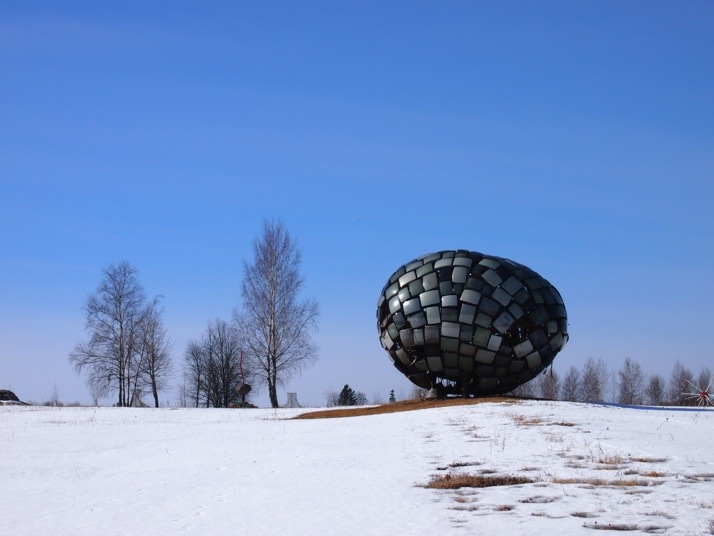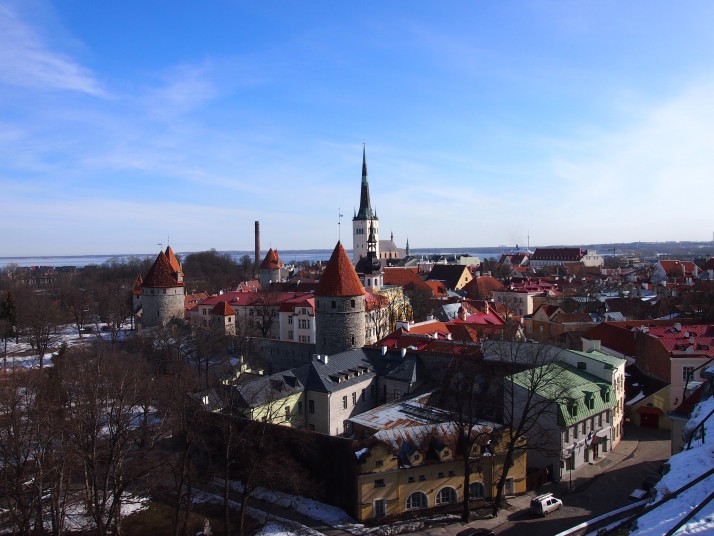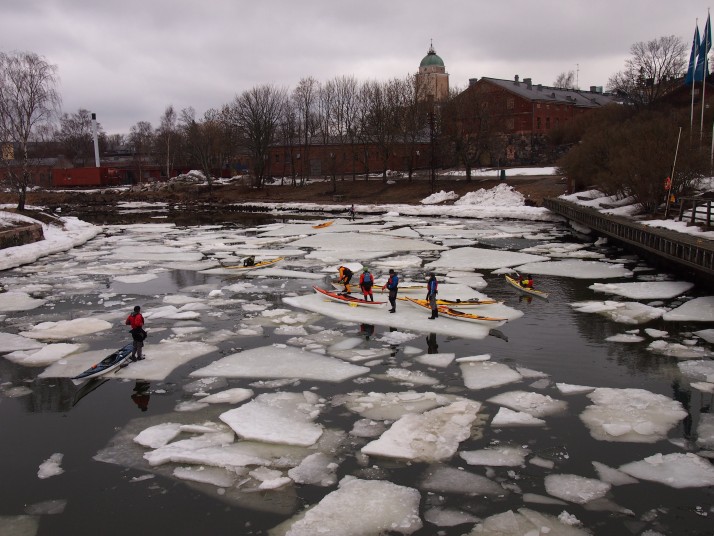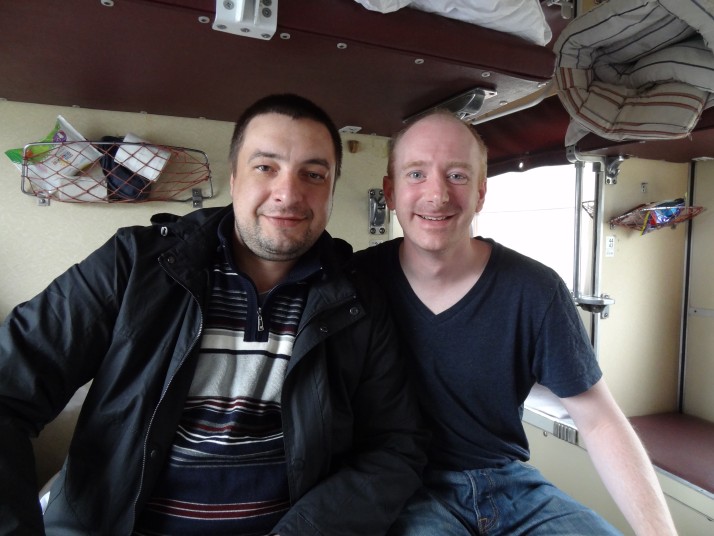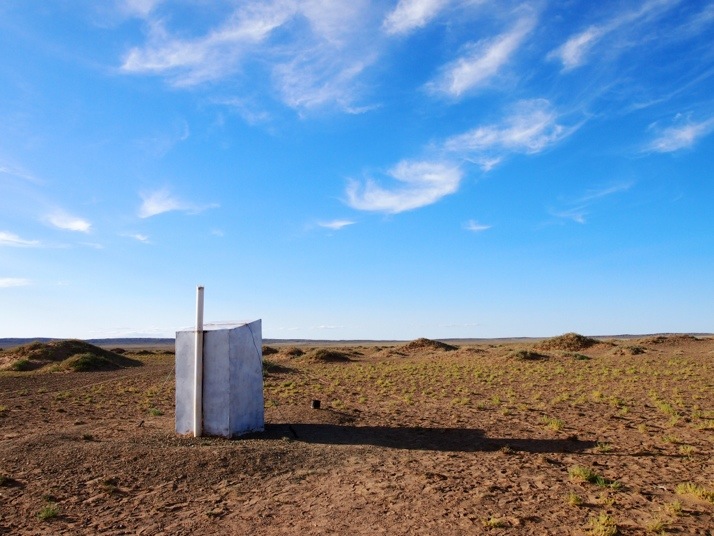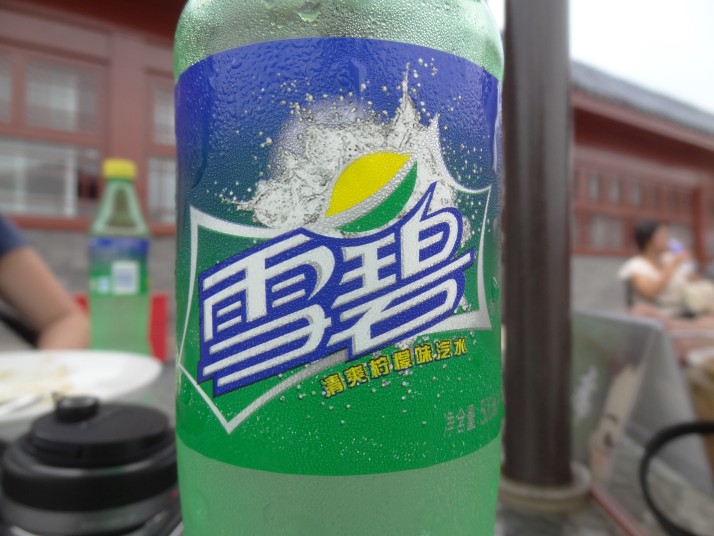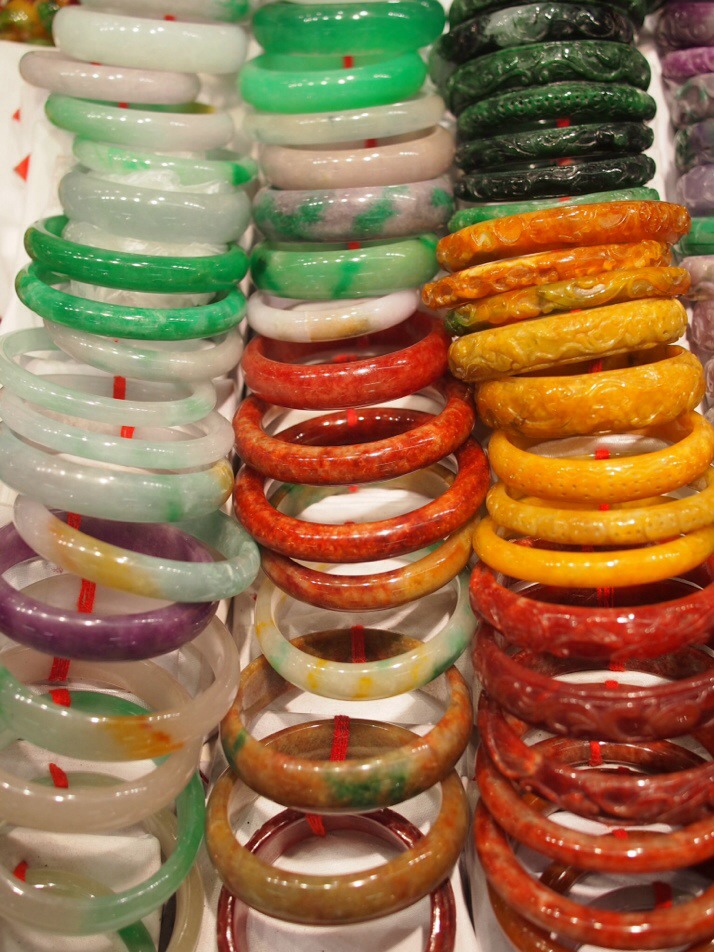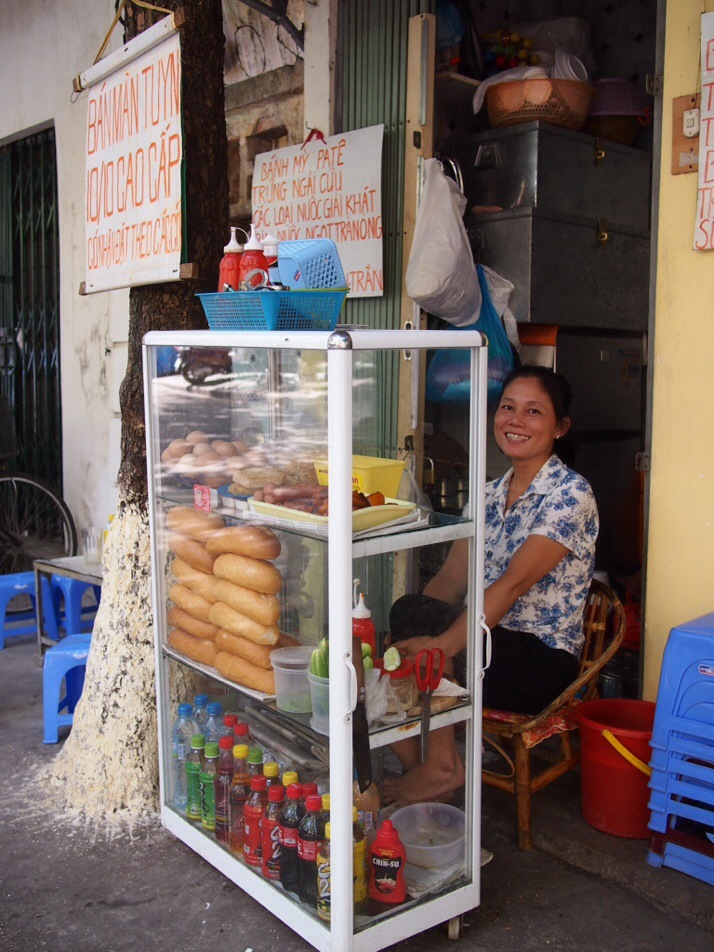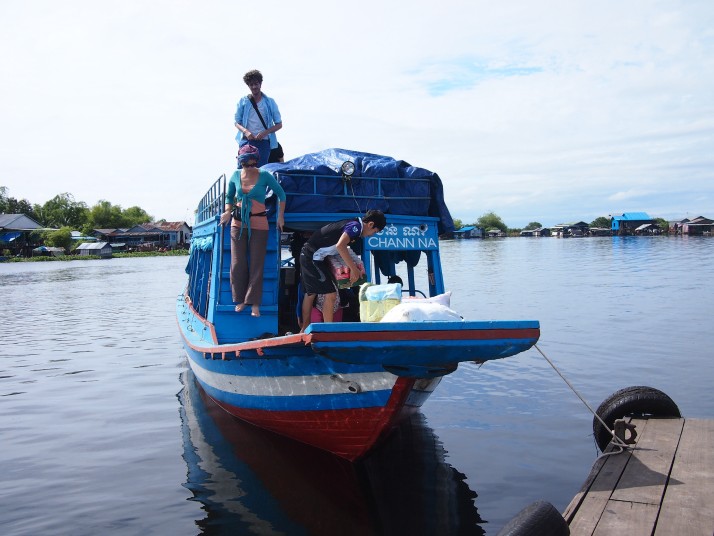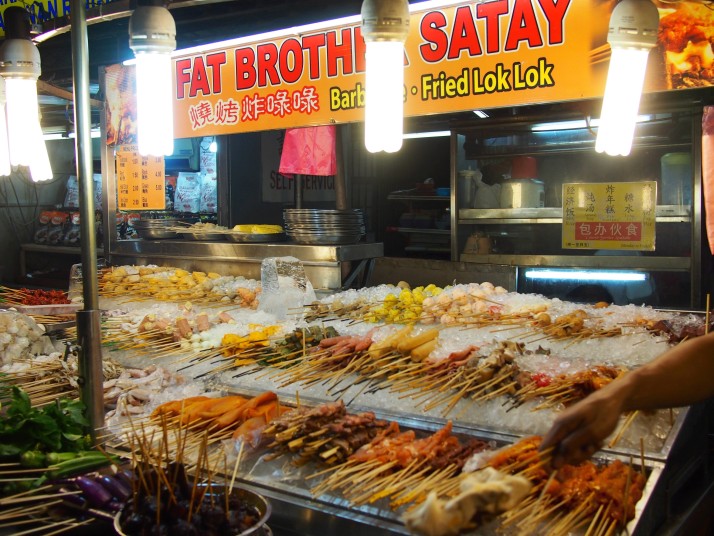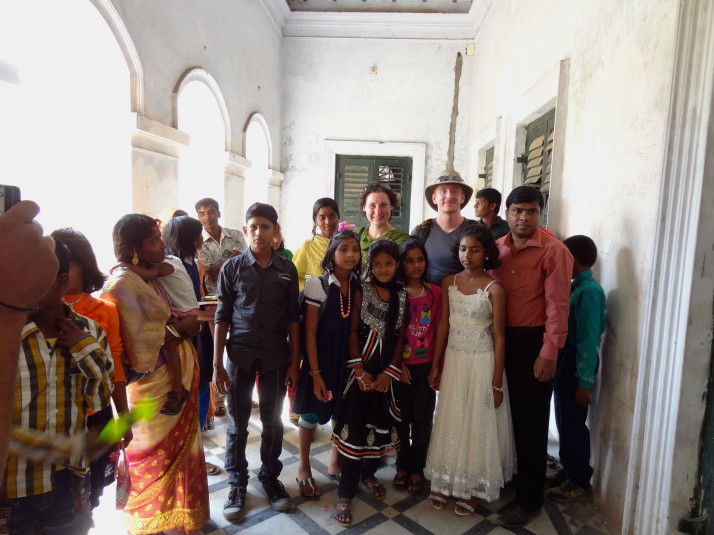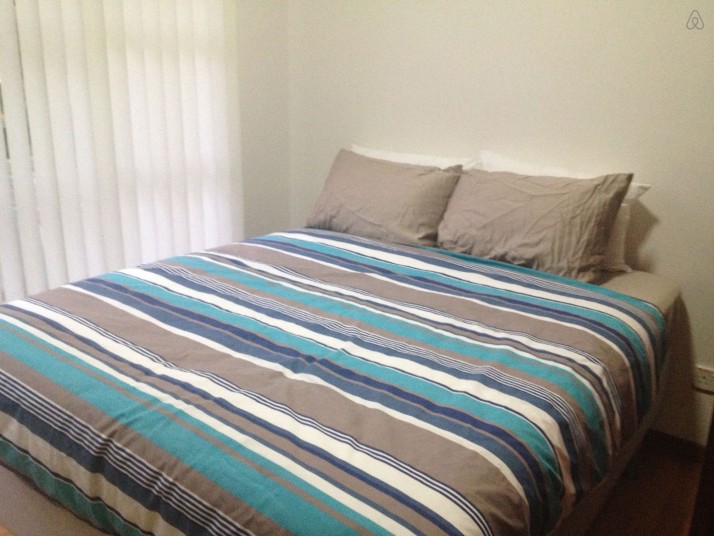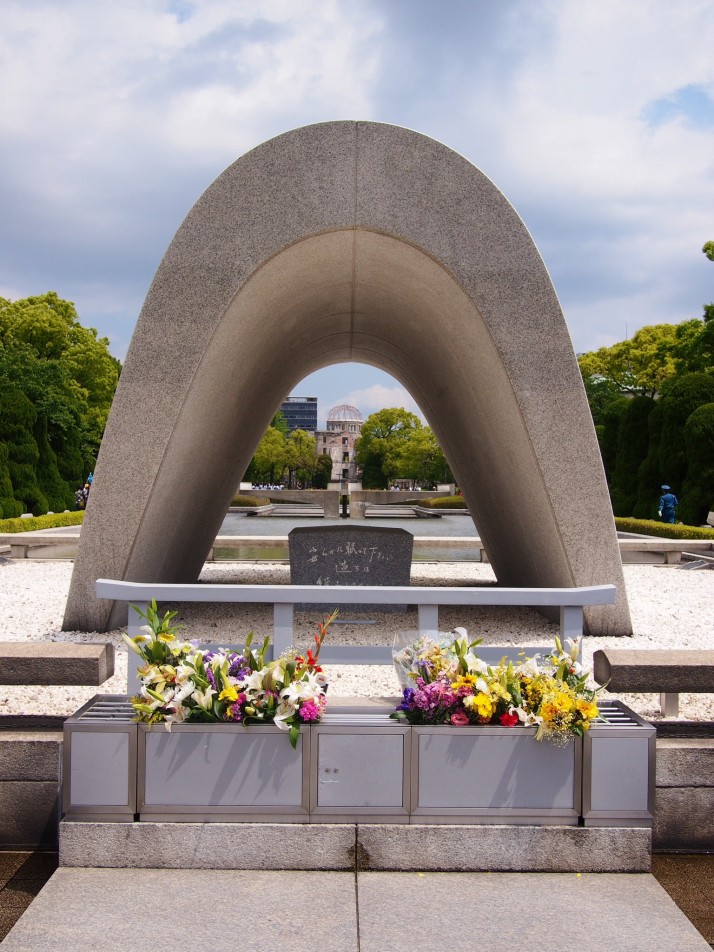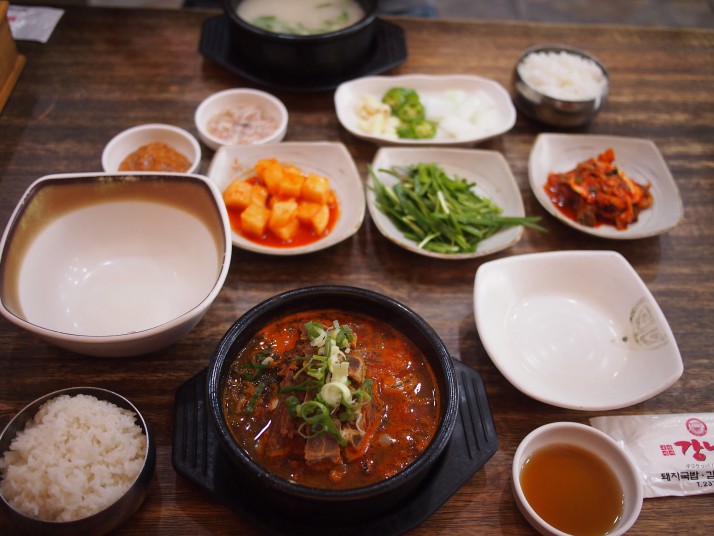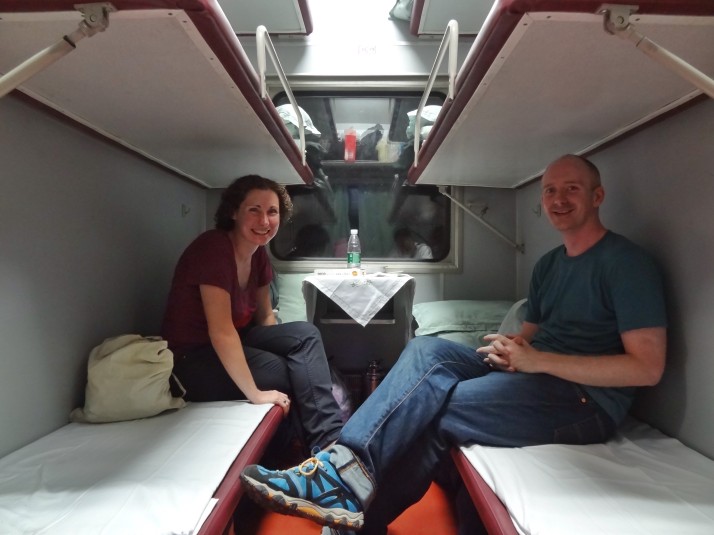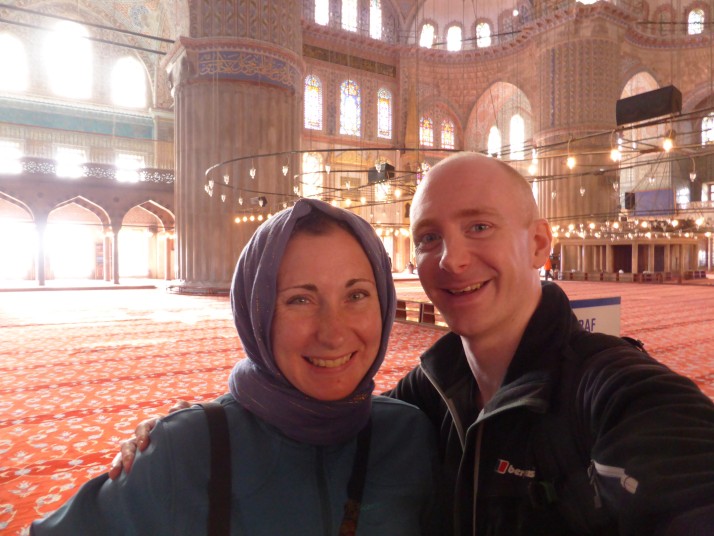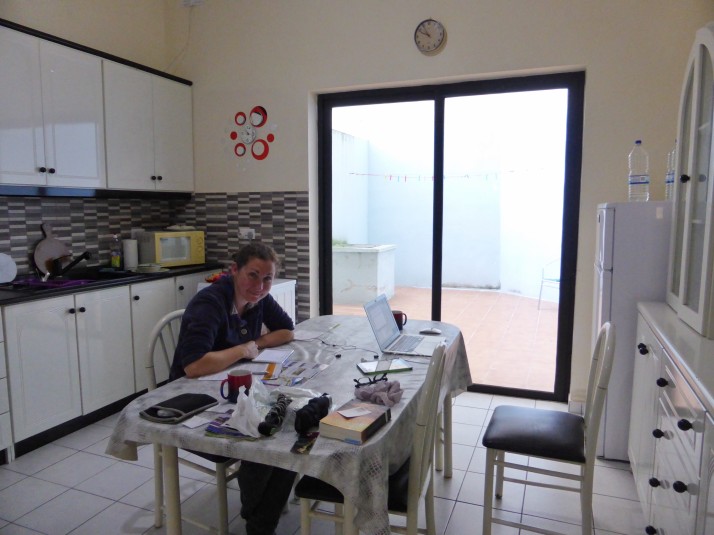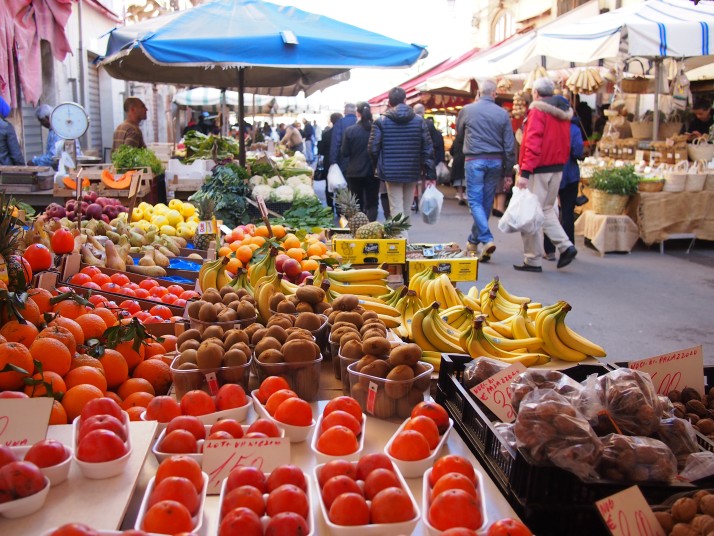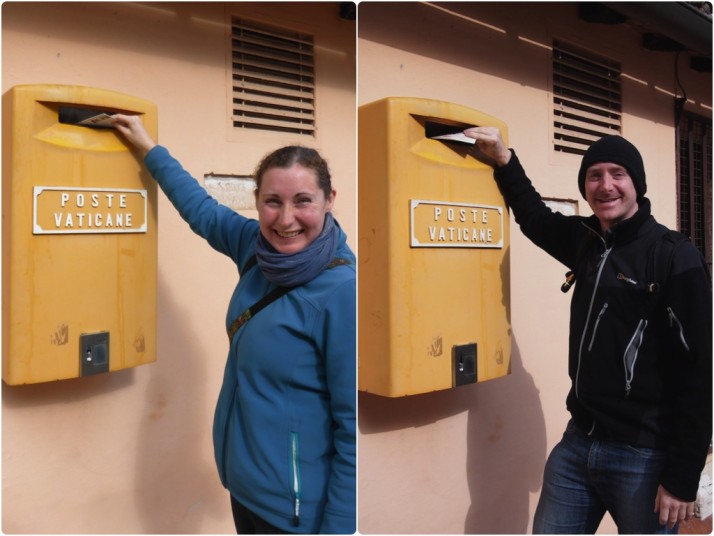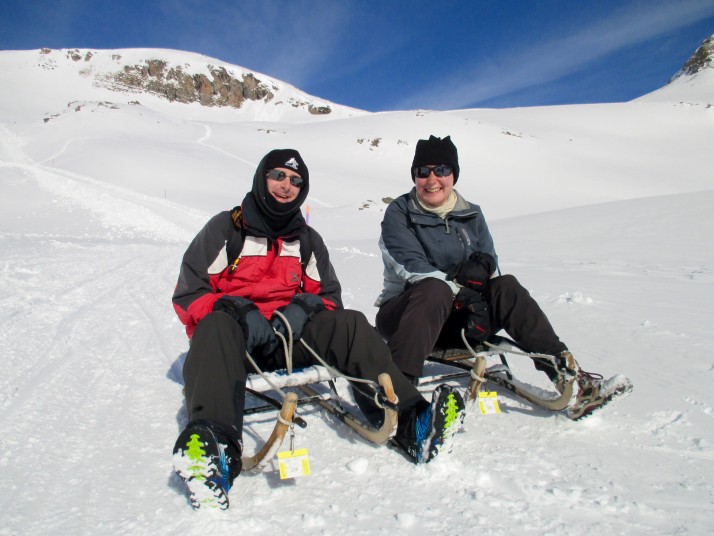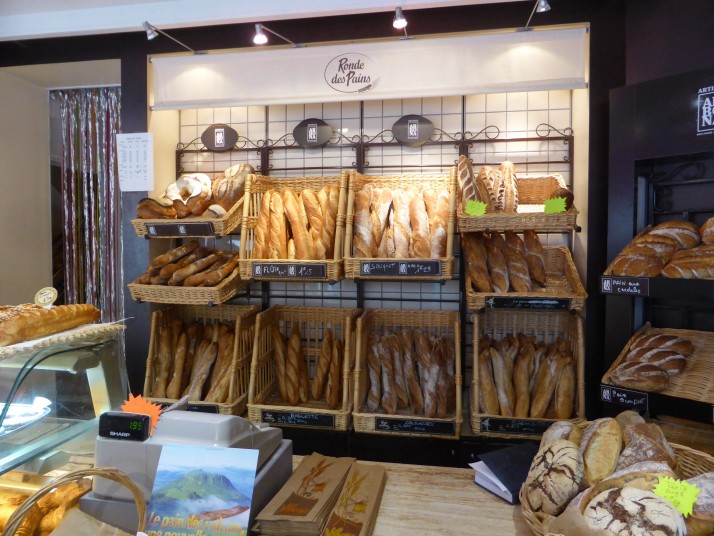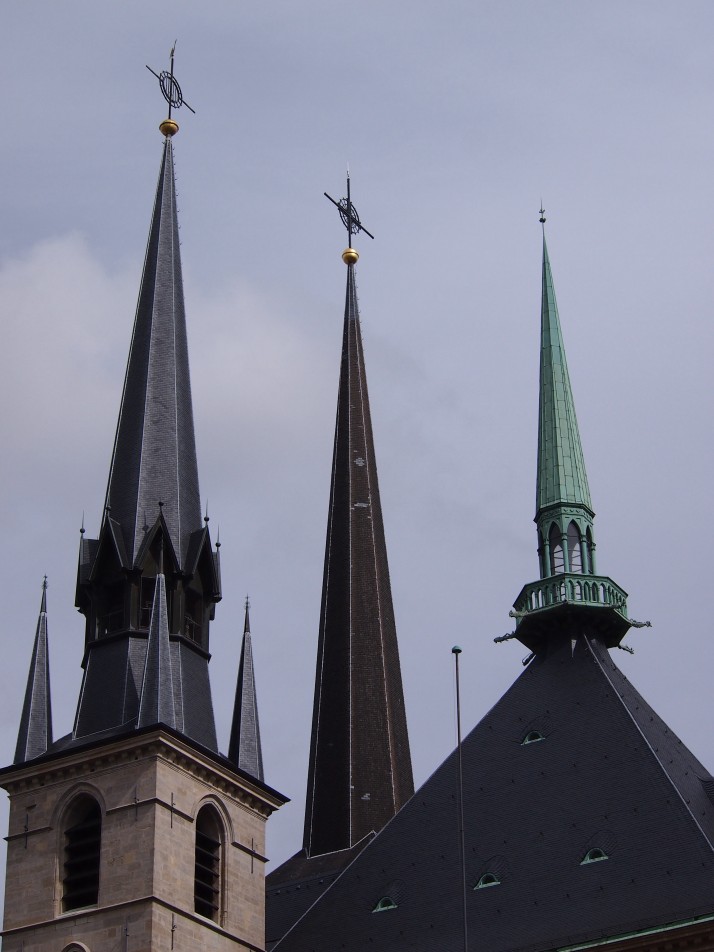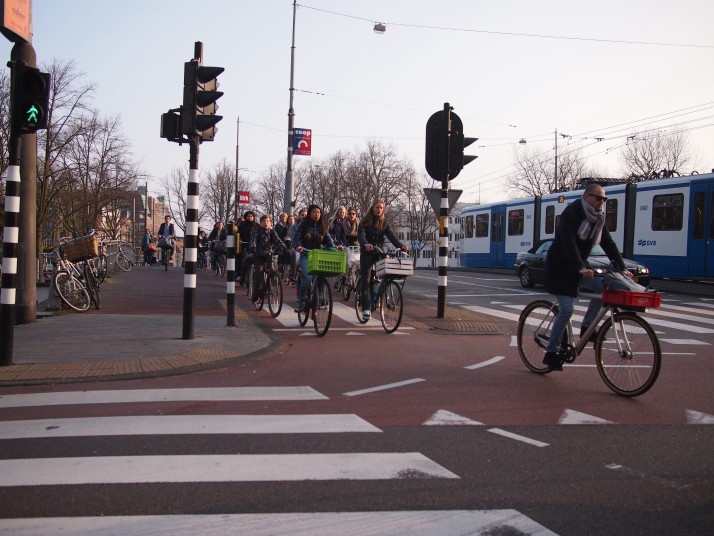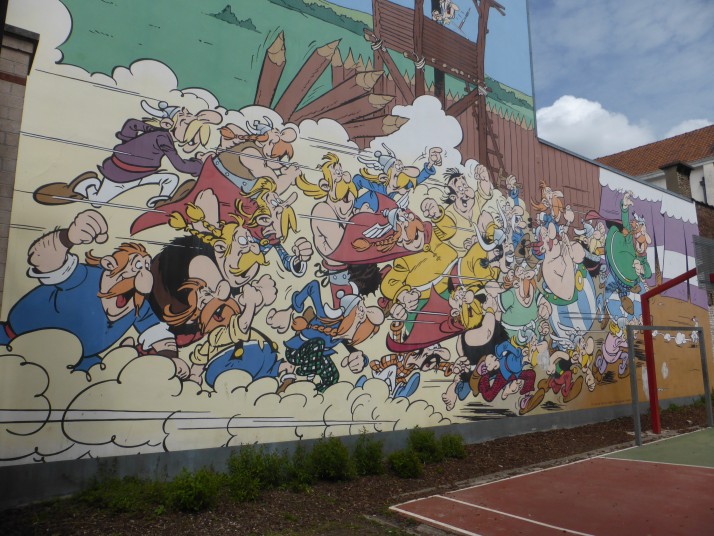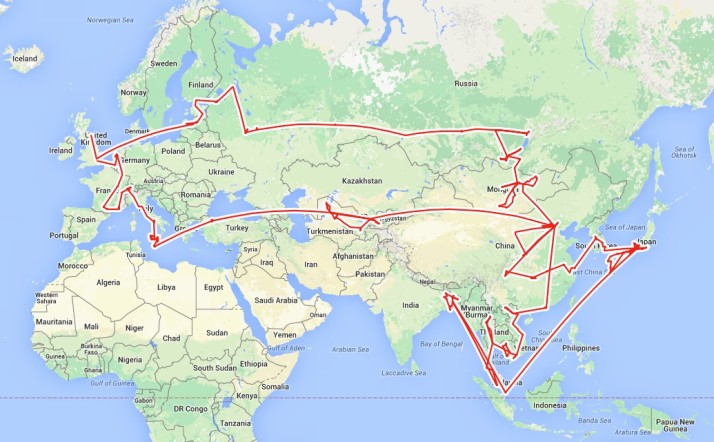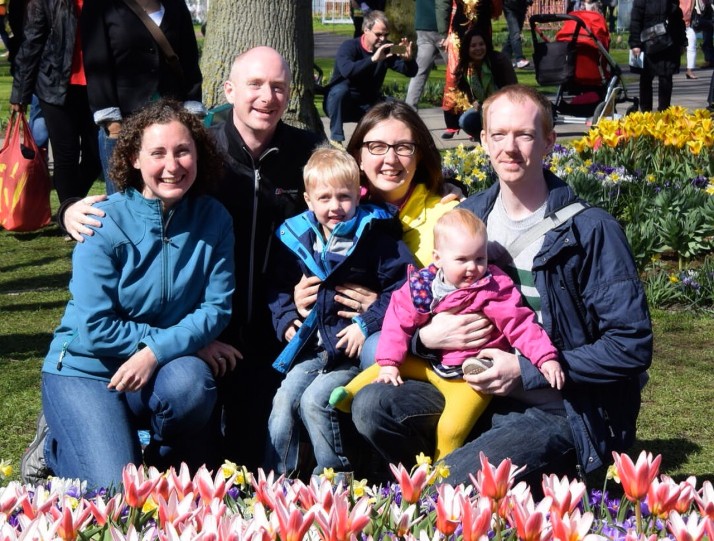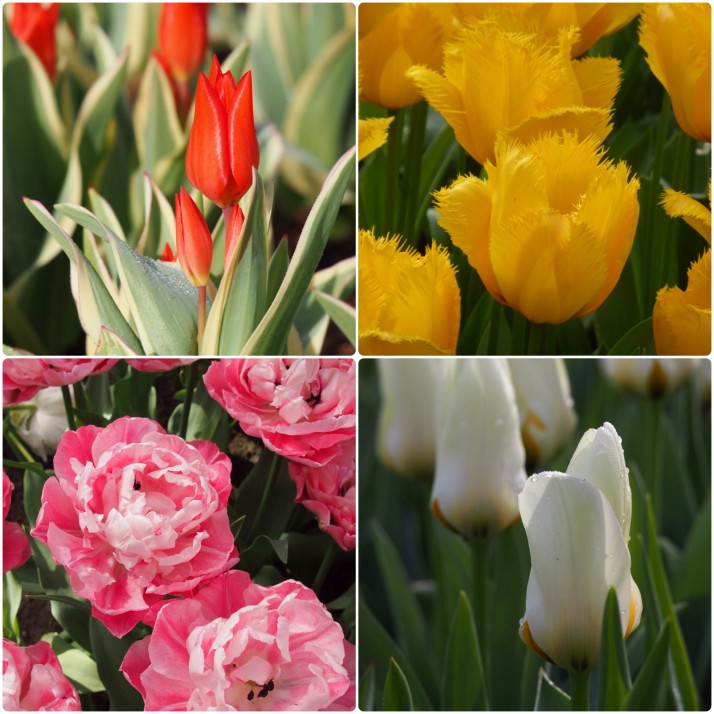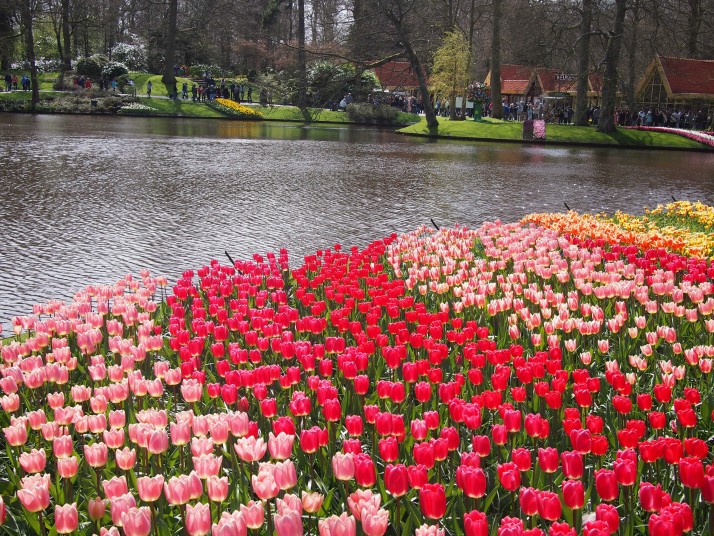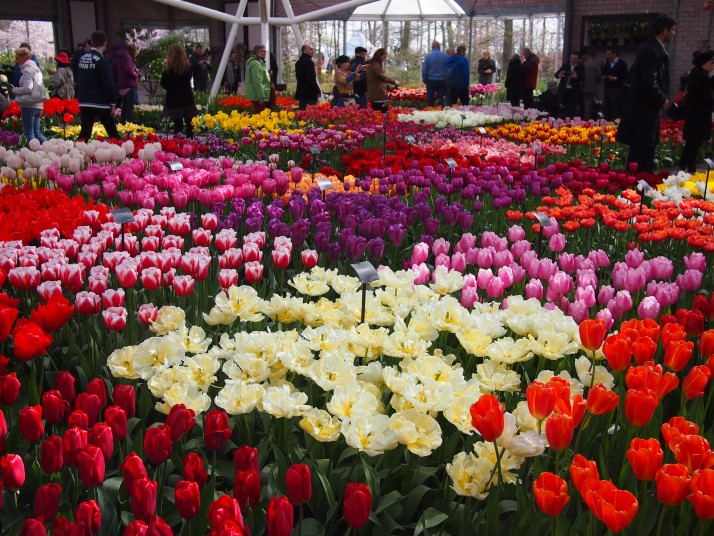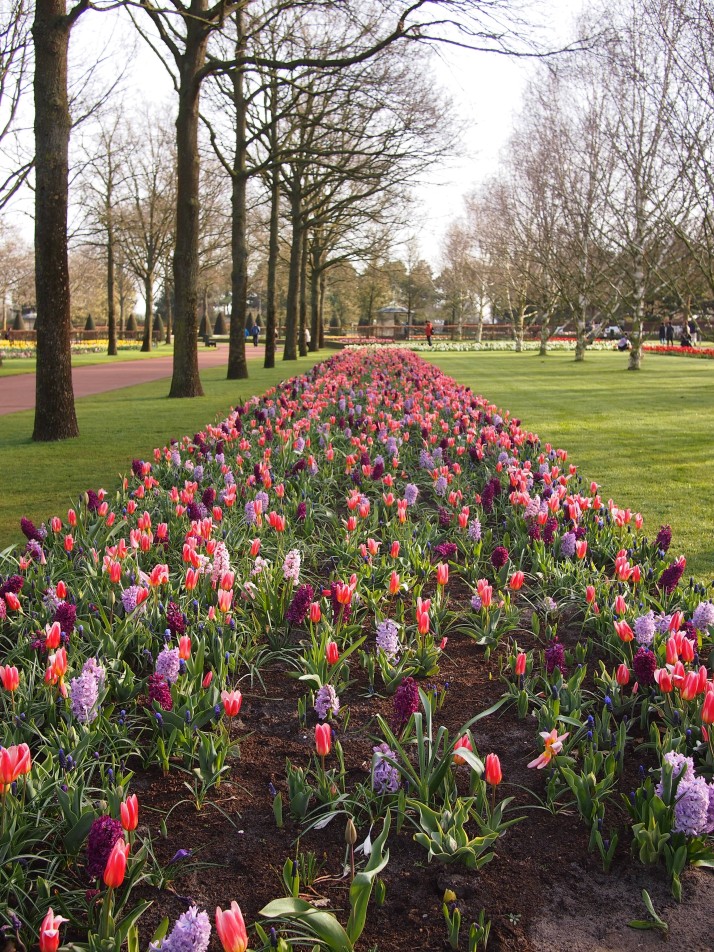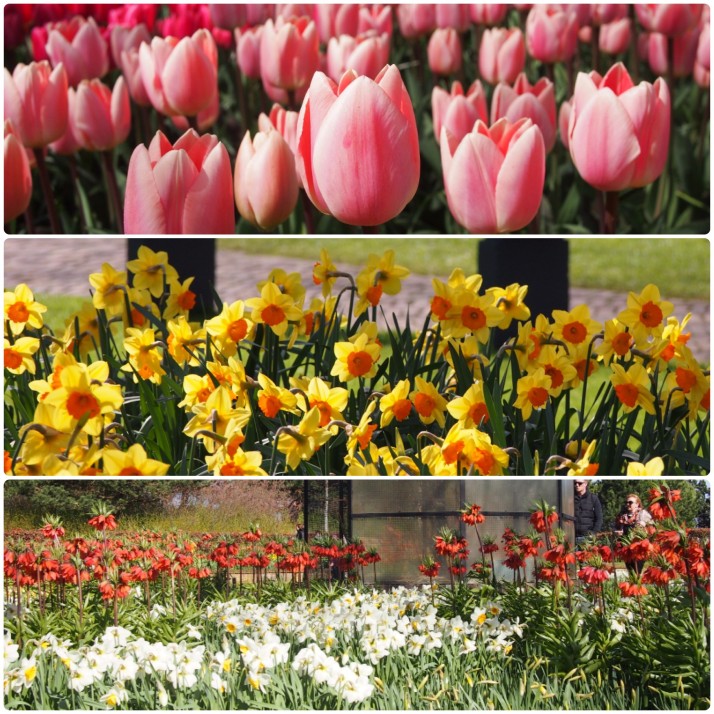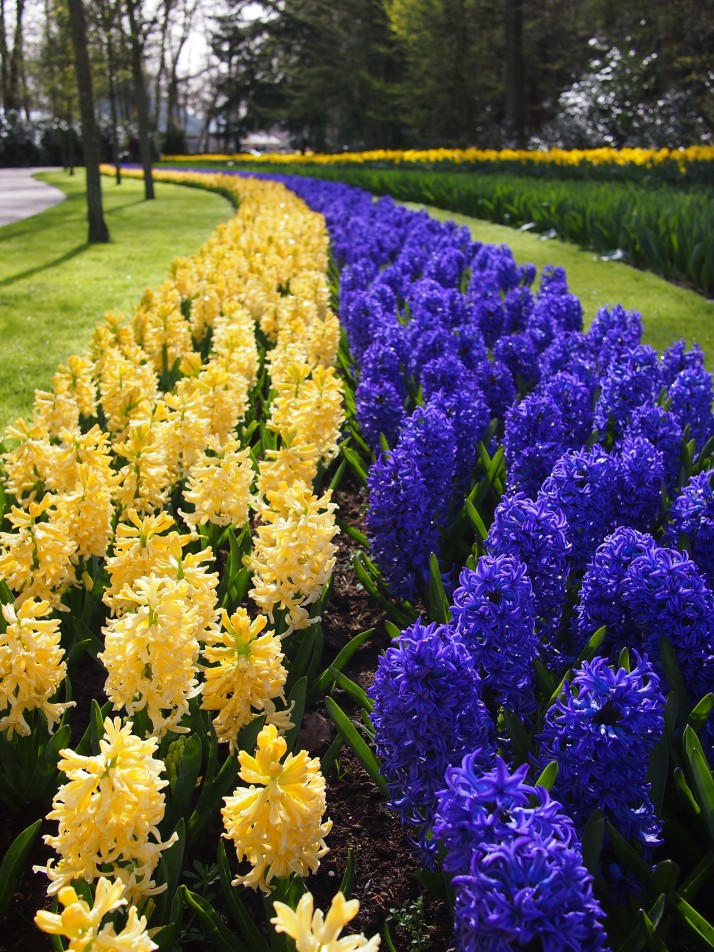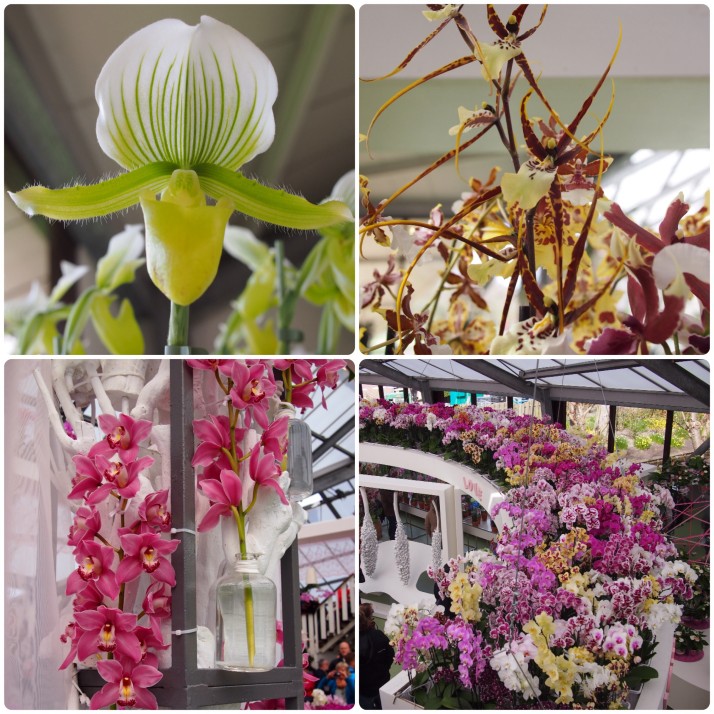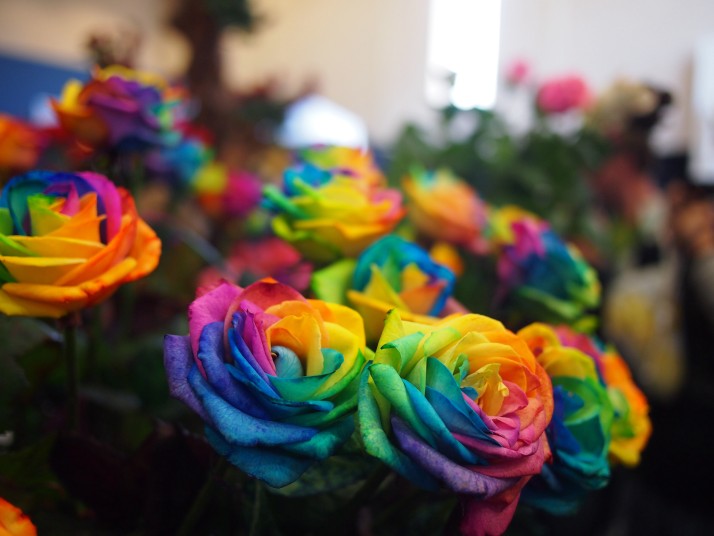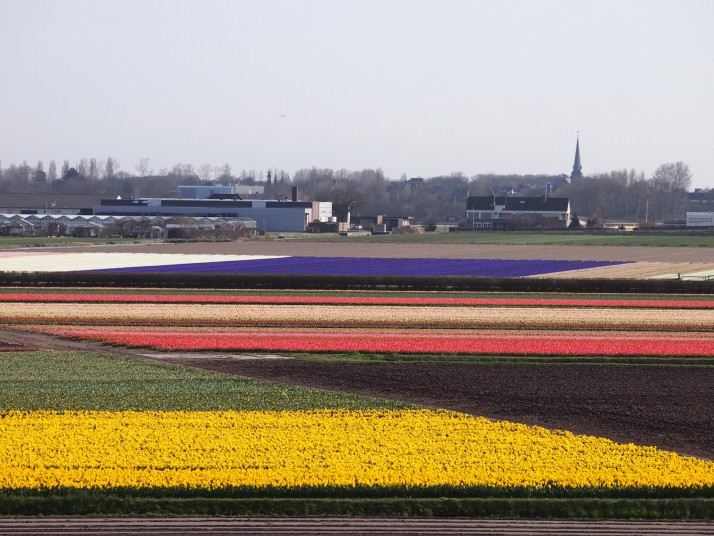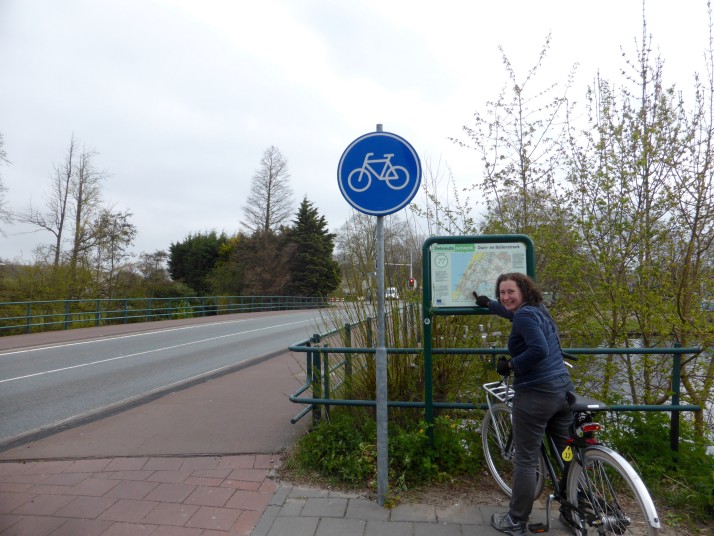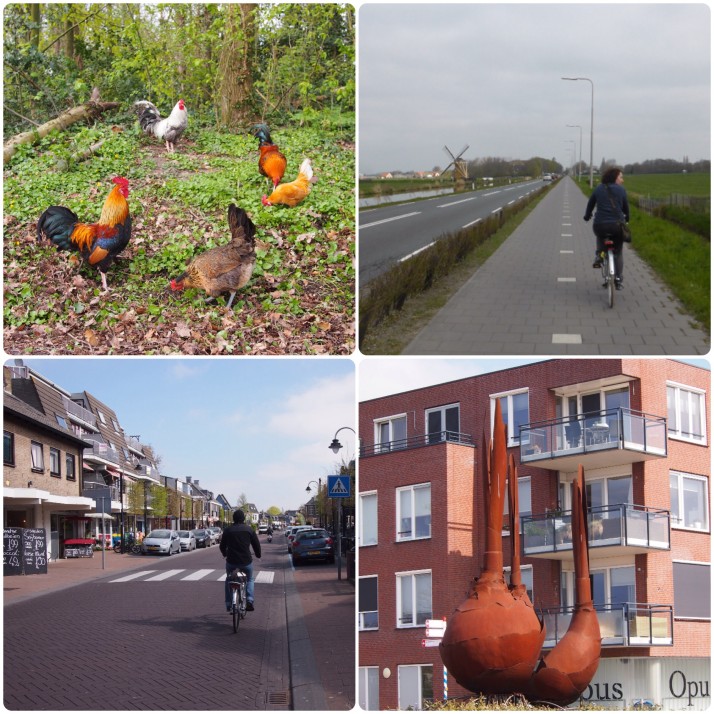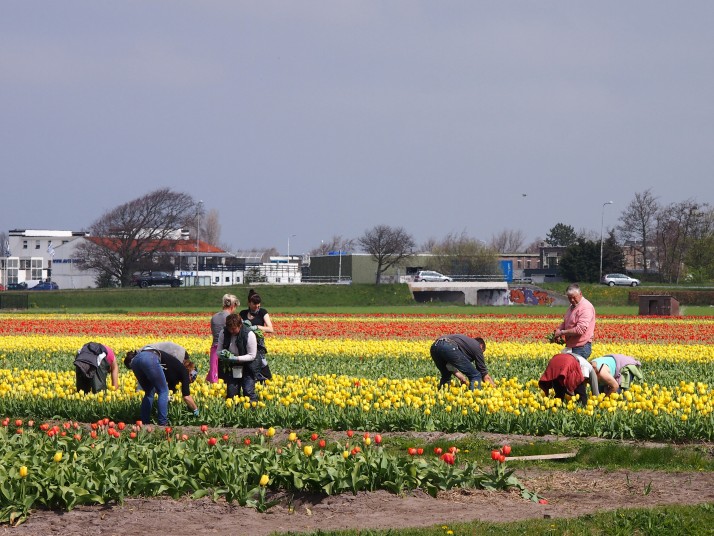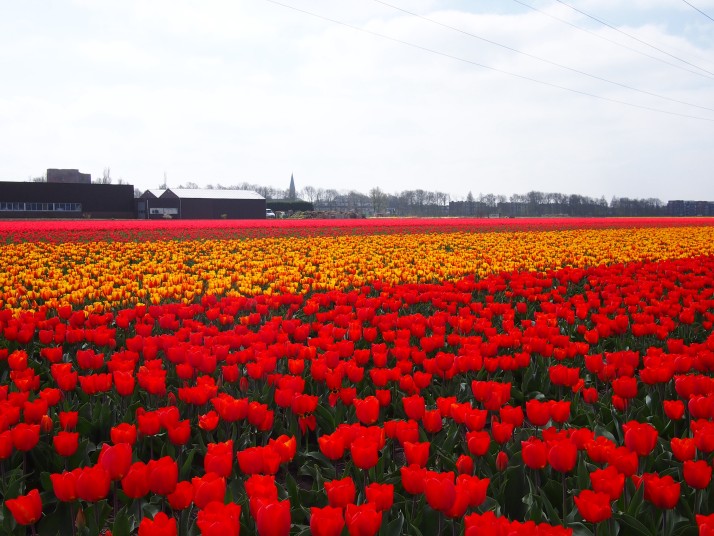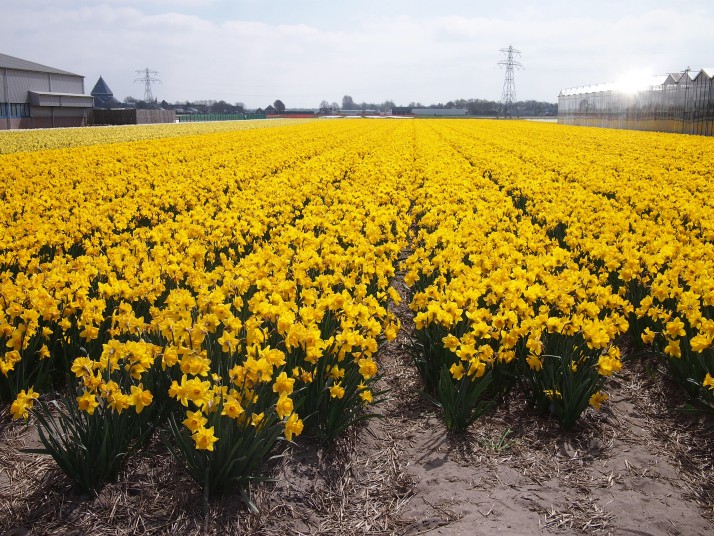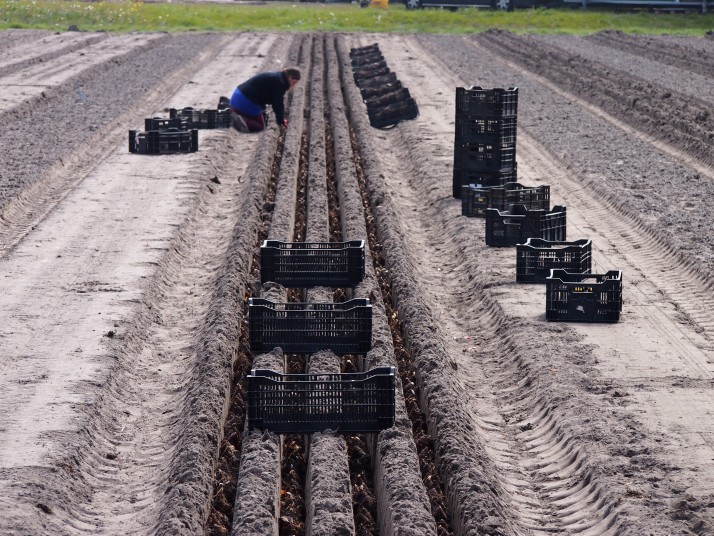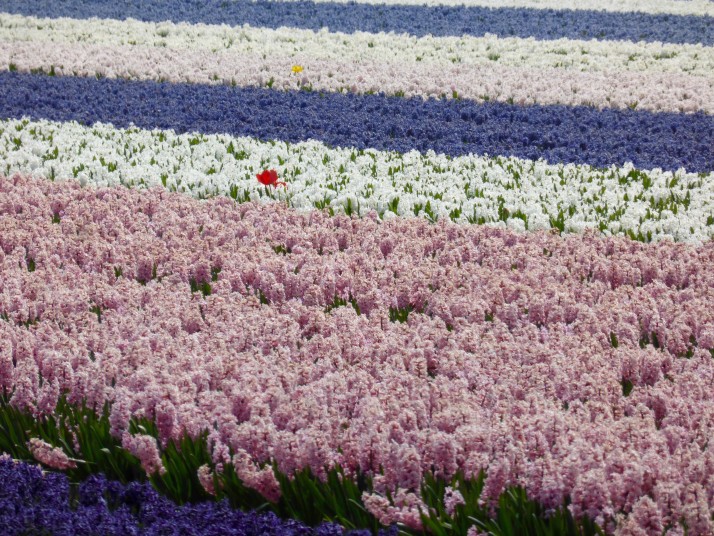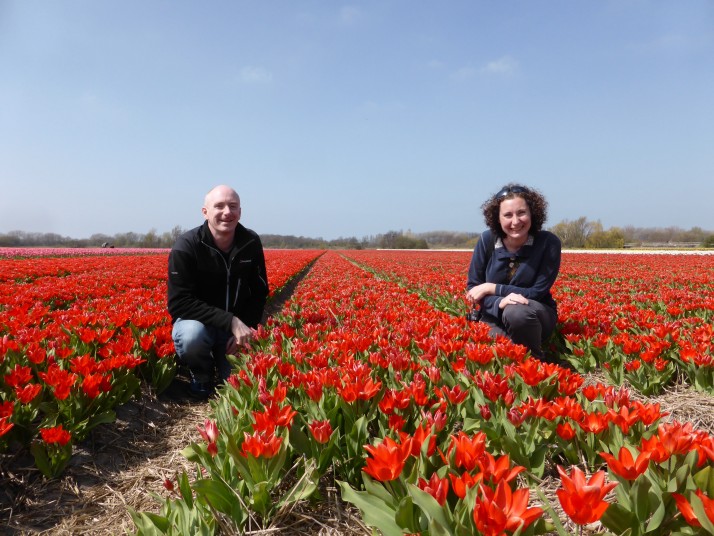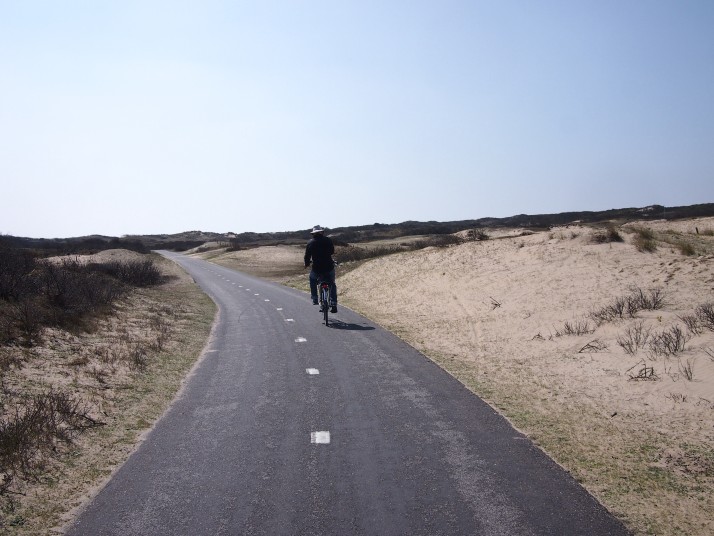When we were thinking about wrapping up our two years of travel it seemed like a good idea to have a round up of our favourite photos. To speed up the process we decided to each go through the photos that we took and compile our own selections. It hadn’t really occurred to me how long it would take to just physically look through the 42,485 photos that I had saved, never mind decide which 50 or so were the best. It was a lot of fun though and we found ourselves frequently stopping to share a photo and ask “remember this?”
I’d say that the most photogenic countries we visited were Mongolia for stunning landscapes, Bangladesh for its friendly people, Japan for its culture, and Uzbekistan for a mix of buildings and people as well as phenomenal weather (a bit of sunshine can make the difference between an OK photo and a good one).
It quickly became obvious that I wouldn’t be able to whittle my favourites down to 50, so here is the first of three long instalments…
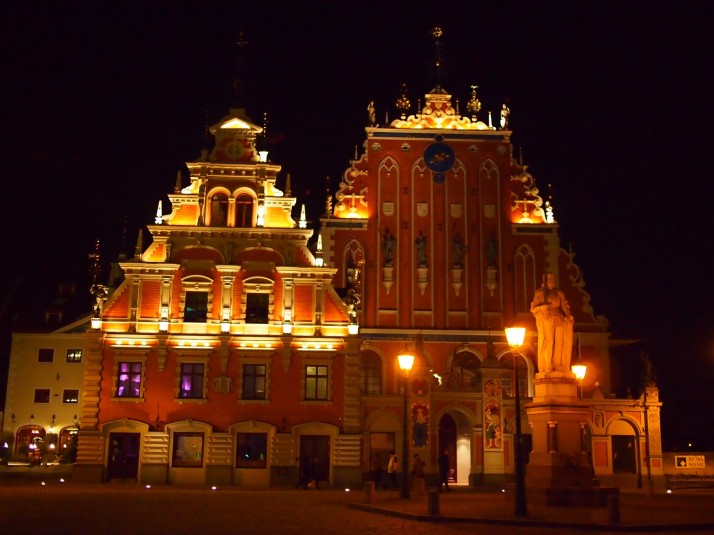 The reconstructed House of the Blackheads on our first evening in Riga, Latvia
The reconstructed House of the Blackheads on our first evening in Riga, Latvia
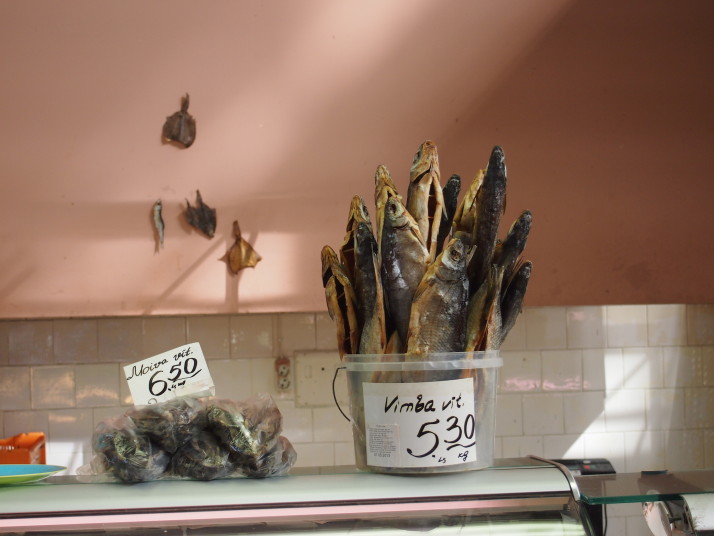 A display of dried fish in Riga’s amazing covered market
A display of dried fish in Riga’s amazing covered market
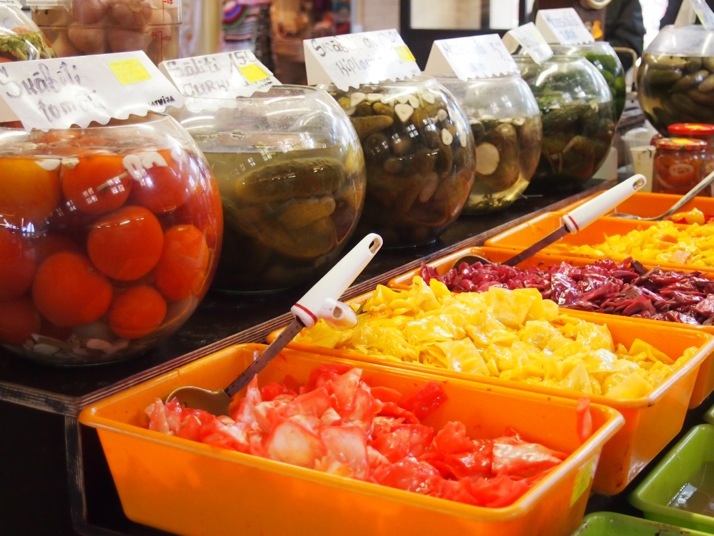 Pickled vegetables are a big part of the food culture in the Baltics and Russia and we got quite a taste for them. This stall is in Riga’s market
Pickled vegetables are a big part of the food culture in the Baltics and Russia and we got quite a taste for them. This stall is in Riga’s market
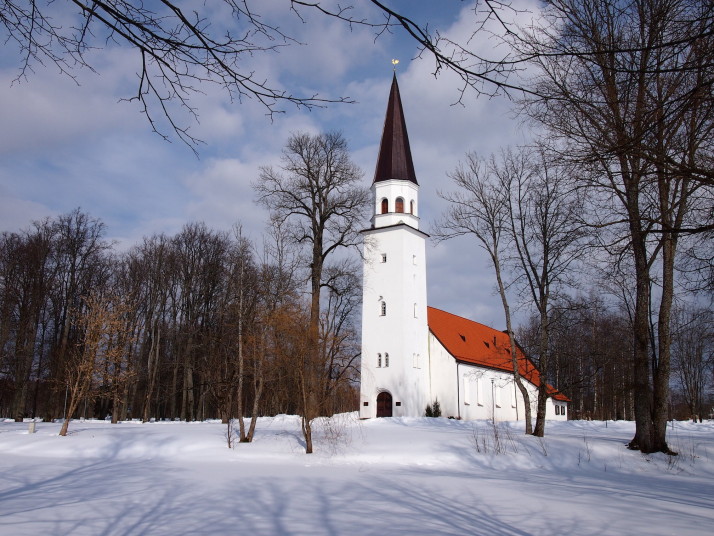 Evangelic Lutheran Church in Sigulda, Latvia
Evangelic Lutheran Church in Sigulda, Latvia
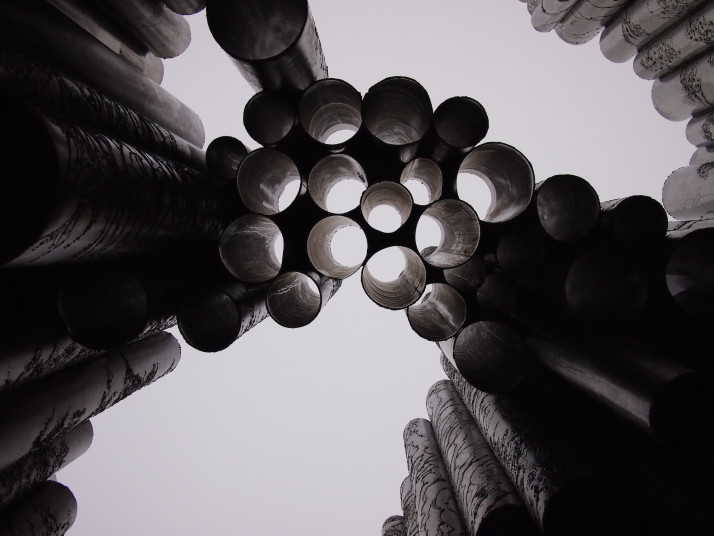 Sibelius monument detail on a grey and rainy morning in Helsinki, Finland
Sibelius monument detail on a grey and rainy morning in Helsinki, Finland
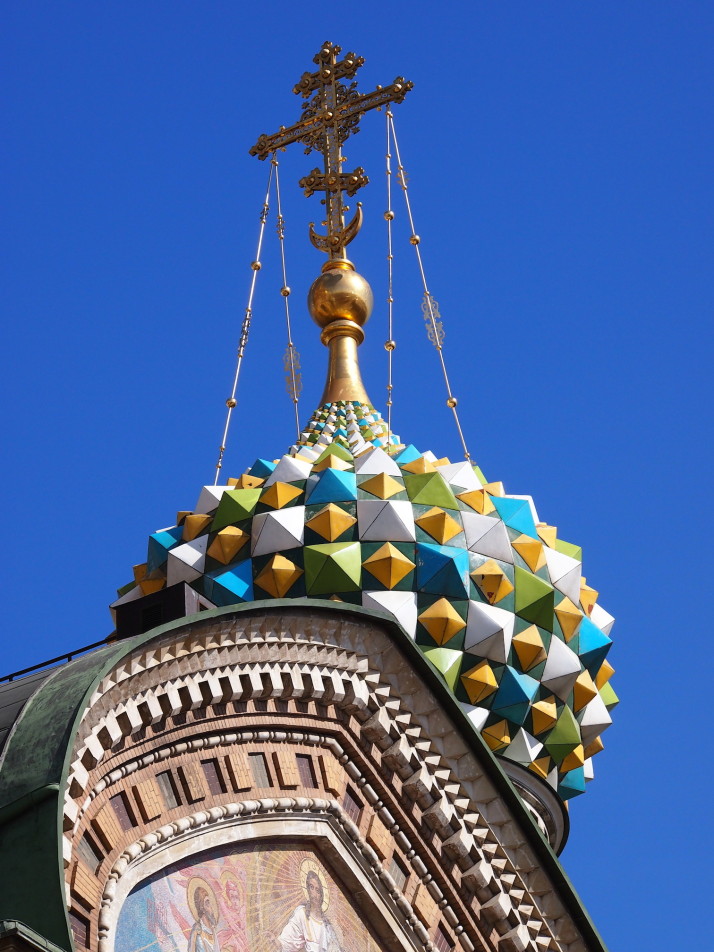 One of the domes of the Church of Our Saviour on Spilled Blood in St Petersburg, Russia
One of the domes of the Church of Our Saviour on Spilled Blood in St Petersburg, Russia
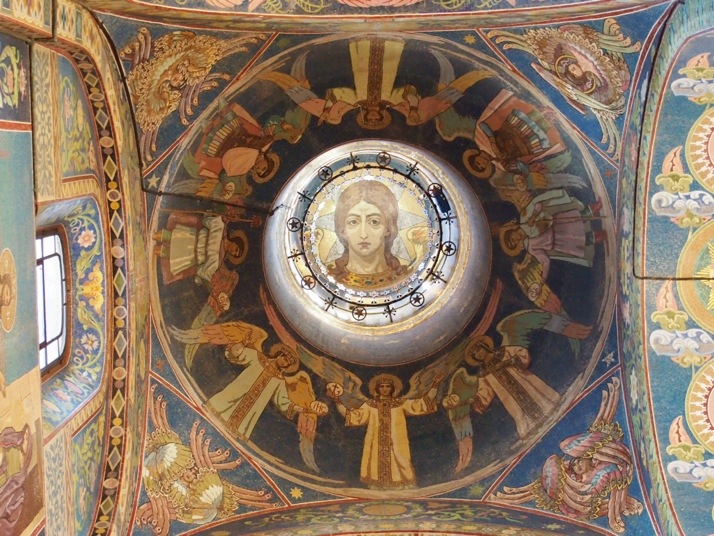 St Petersburg’s Church of Our Saviour on Spilled Blood was one of my favourite sights in Russia, and the interior was just as spectacular as the exterior
St Petersburg’s Church of Our Saviour on Spilled Blood was one of my favourite sights in Russia, and the interior was just as spectacular as the exterior
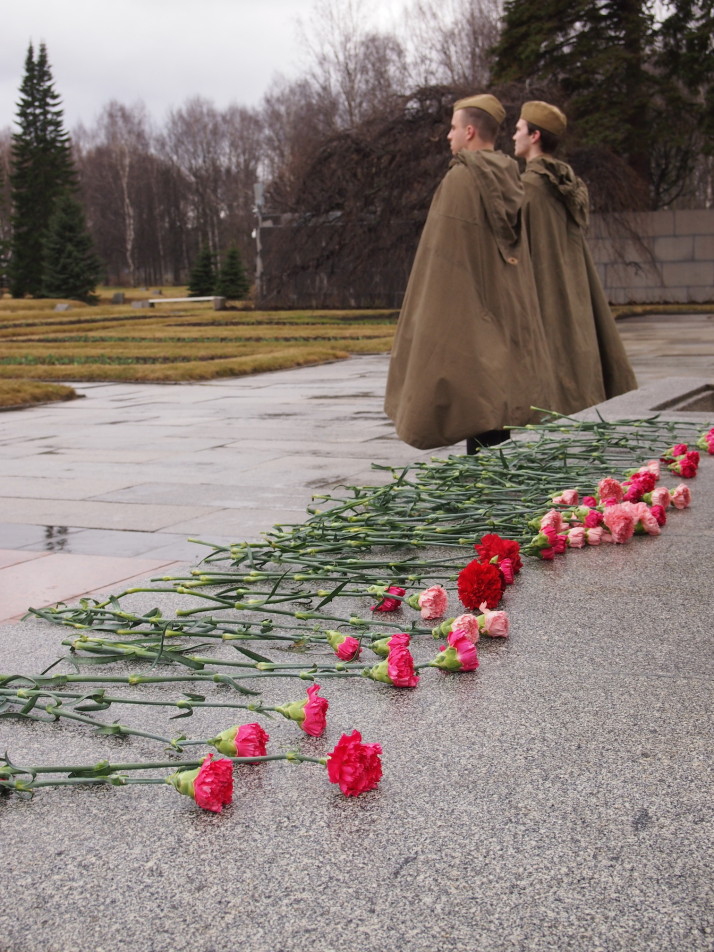 Cadets stand guard at the statue of the Motherland at Piskariovskoye Memorial Cemetery in St Petersburg where 420,000 victims of the Siege of Leningrad are buried
Cadets stand guard at the statue of the Motherland at Piskariovskoye Memorial Cemetery in St Petersburg where 420,000 victims of the Siege of Leningrad are buried
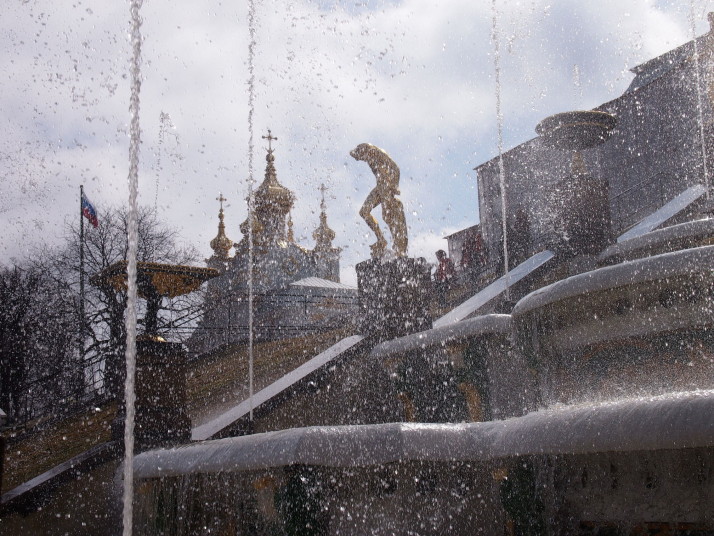 Looking through the Grand Cascade at Peterhof
Looking through the Grand Cascade at Peterhof
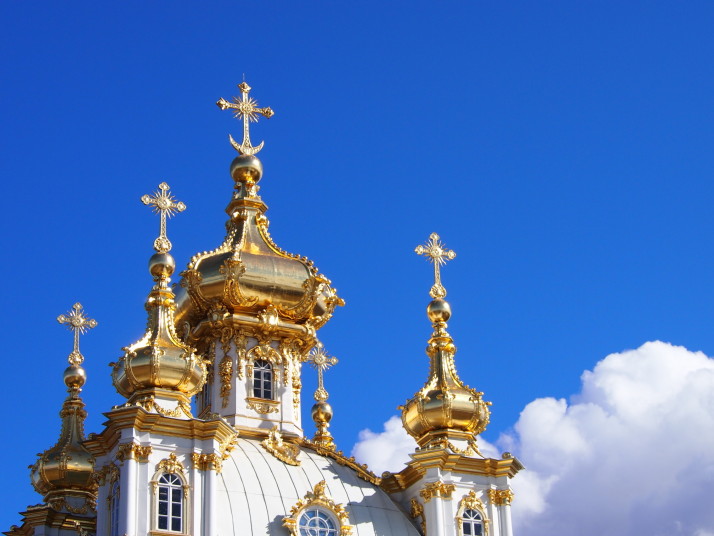 I loved the onion domes on the Russian Orthodox churches and these gold ones at Peterhof are particularly striking
I loved the onion domes on the Russian Orthodox churches and these gold ones at Peterhof are particularly striking
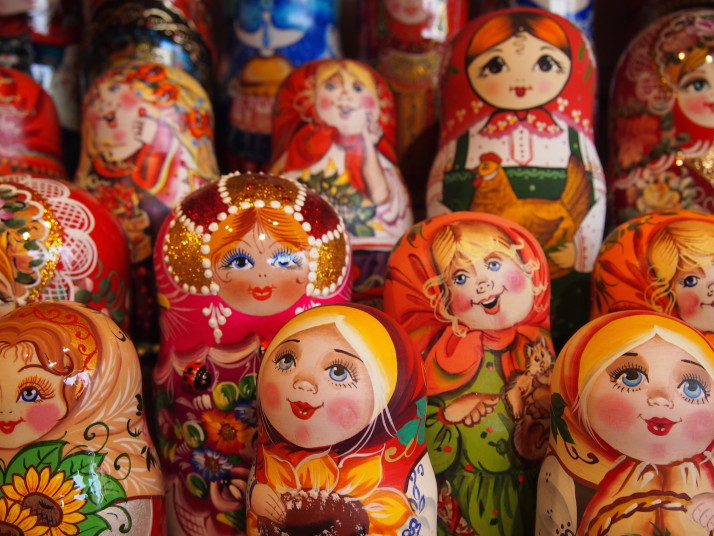 Not buying myself a Russian doll is a small regret from my time in Russia though I probably would have been sick of carrying it very quickly!
Not buying myself a Russian doll is a small regret from my time in Russia though I probably would have been sick of carrying it very quickly!
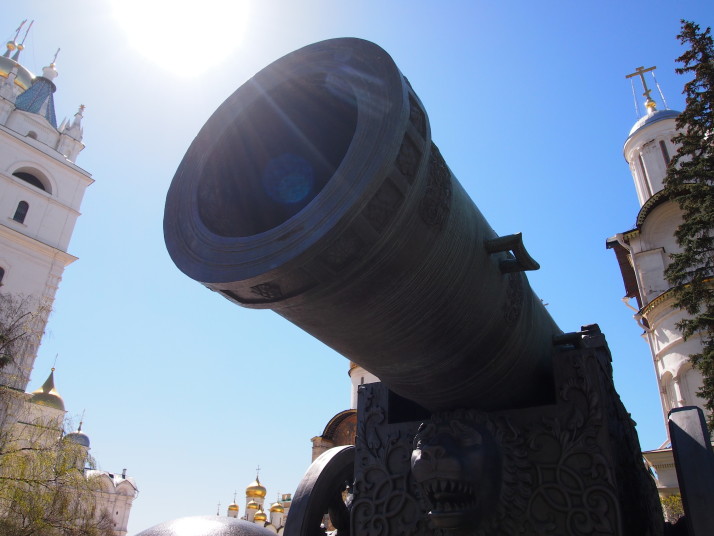 The huge Tsar-Cannon in Cathedral Square at the Moscow Kremlin has supposedly only ever been fired once
The huge Tsar-Cannon in Cathedral Square at the Moscow Kremlin has supposedly only ever been fired once
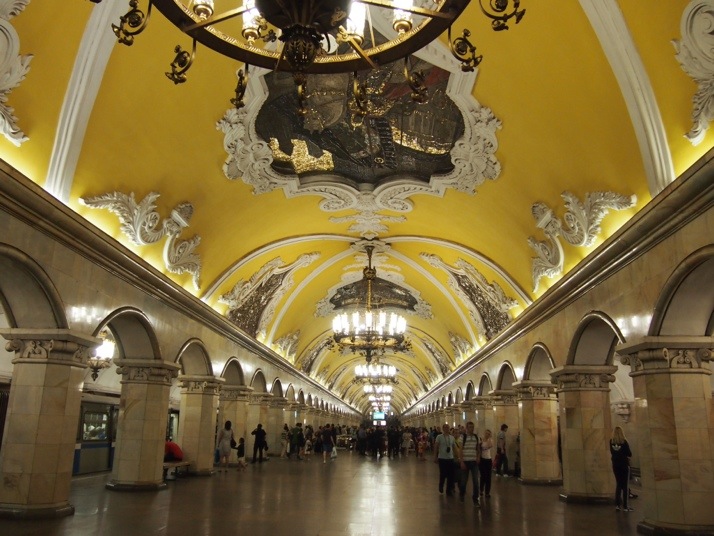 Komsomolskaya metro station in Moscow
Komsomolskaya metro station in Moscow
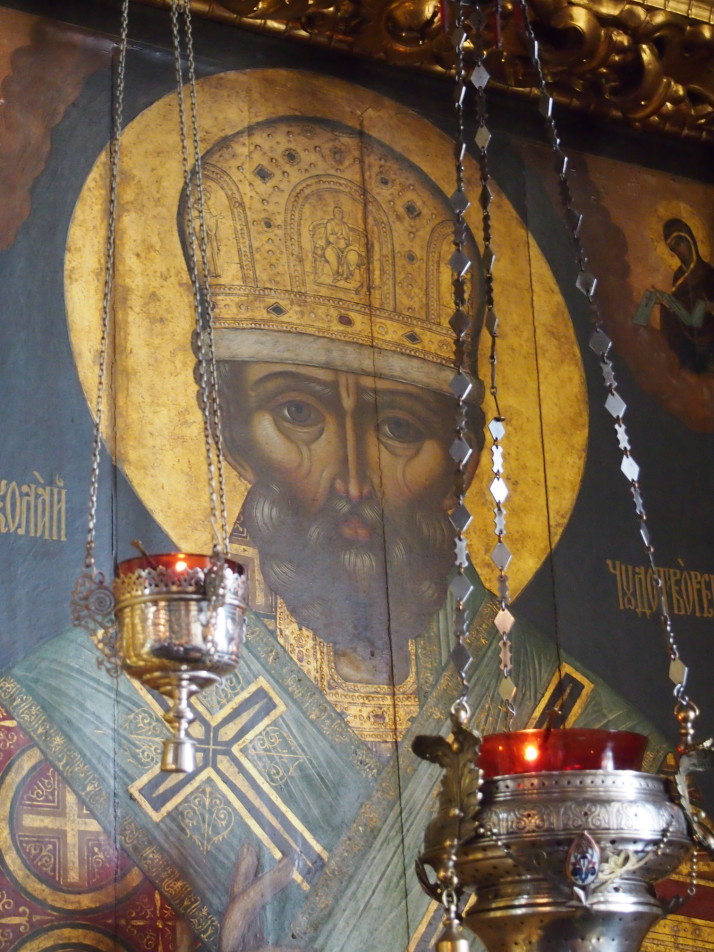 An icon and candles in the monastery in Sergiev Posad, part of Russia’s Golden Ring
An icon and candles in the monastery in Sergiev Posad, part of Russia’s Golden Ring
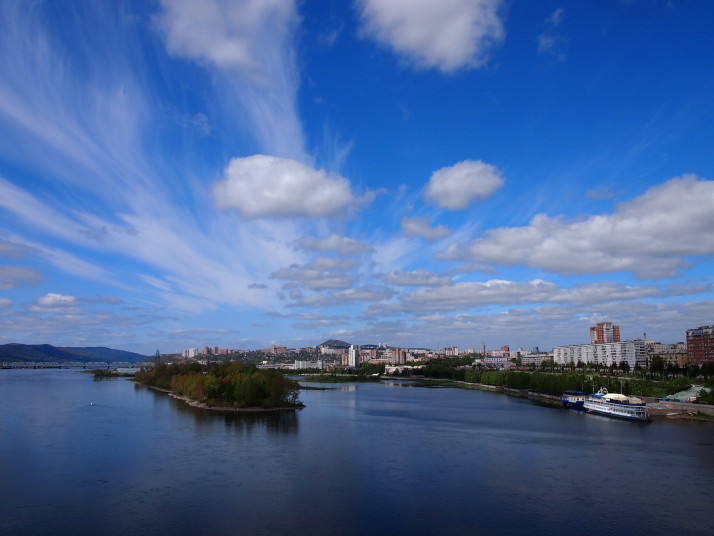 Looking up the River Yenisey in Krasnoyarsk
Looking up the River Yenisey in Krasnoyarsk
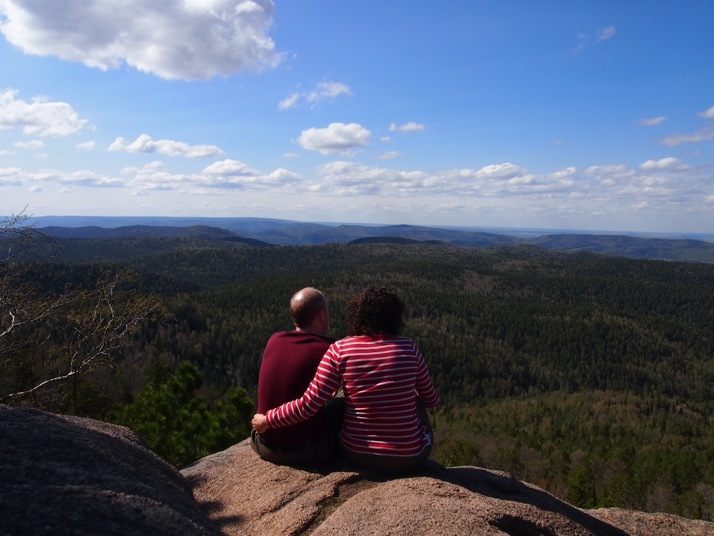 As we moved into Siberian Russia, the landscapes got noticeably bigger and heavily forested. The view from the Stolby Nature Reserve near Krasnoyarsk seemed to go on forever
As we moved into Siberian Russia, the landscapes got noticeably bigger and heavily forested. The view from the Stolby Nature Reserve near Krasnoyarsk seemed to go on forever
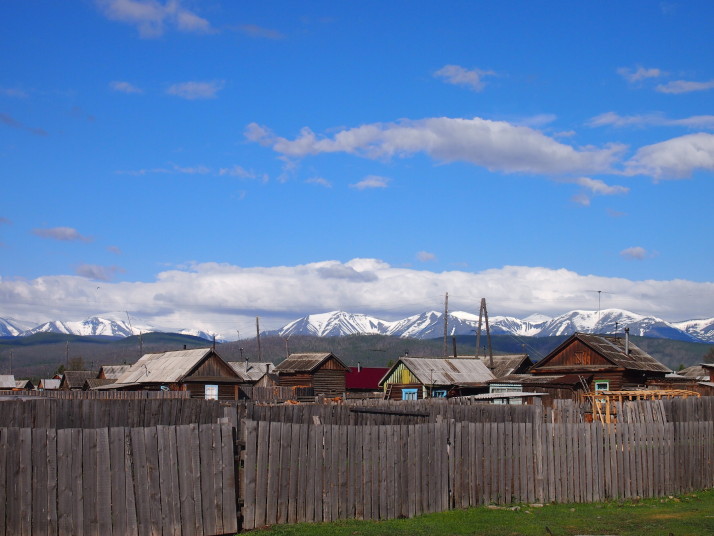 Snowy mountains above the small village of Baikalskoe on the northern shores of Lake Baikal
Snowy mountains above the small village of Baikalskoe on the northern shores of Lake Baikal
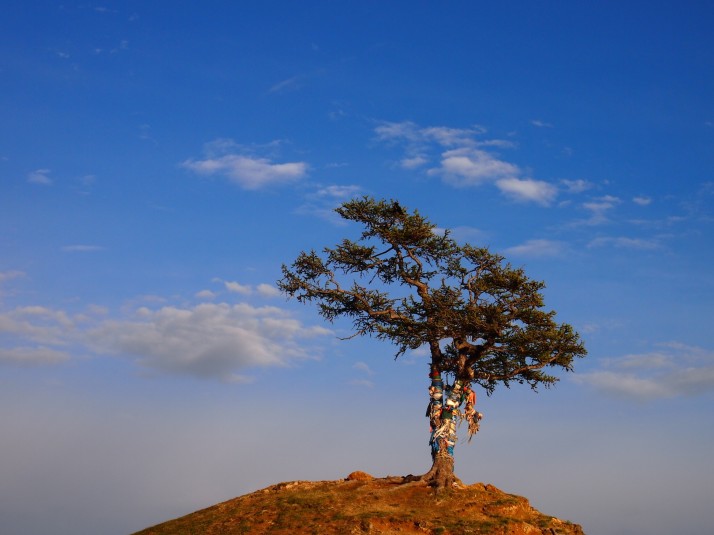 The Buryat people of Siberia practice animism, this sacred tree on Olkhon Island is tied with offering scarves
The Buryat people of Siberia practice animism, this sacred tree on Olkhon Island is tied with offering scarves
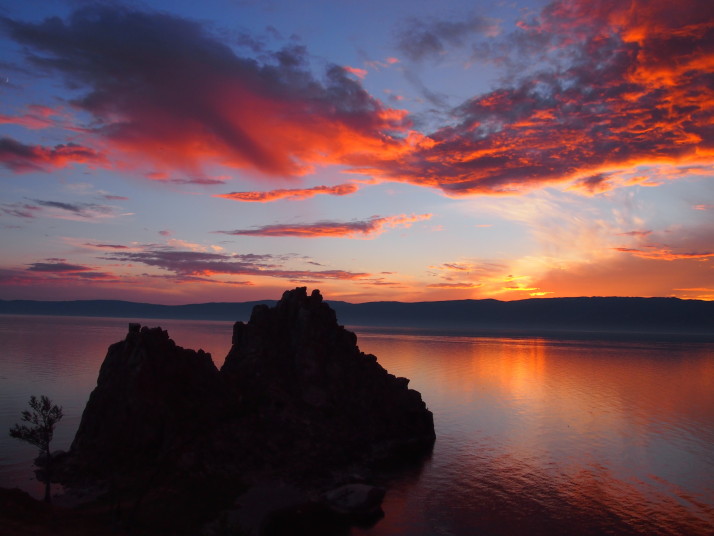 On our first evening staying at Nikita’s Homestead on Olkhon Island in Lake Baikal we watched a spectacular sunset
On our first evening staying at Nikita’s Homestead on Olkhon Island in Lake Baikal we watched a spectacular sunset
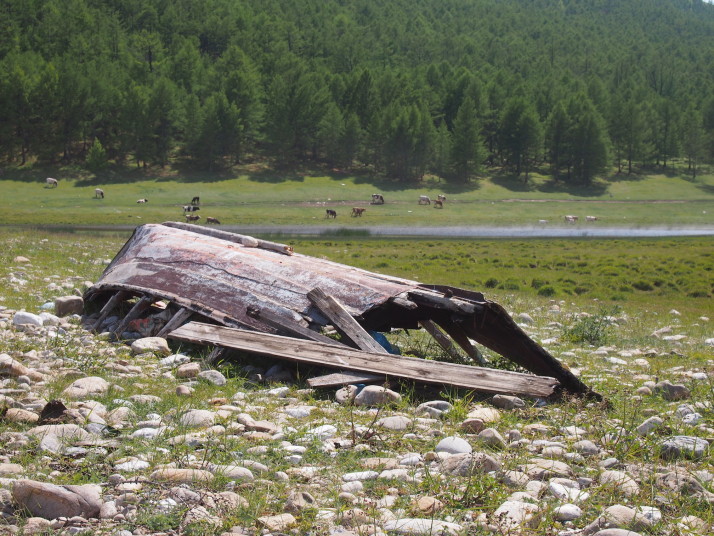 A dilapidated old boat lies on the lakeshore in the north of Olkhon Island
A dilapidated old boat lies on the lakeshore in the north of Olkhon Island
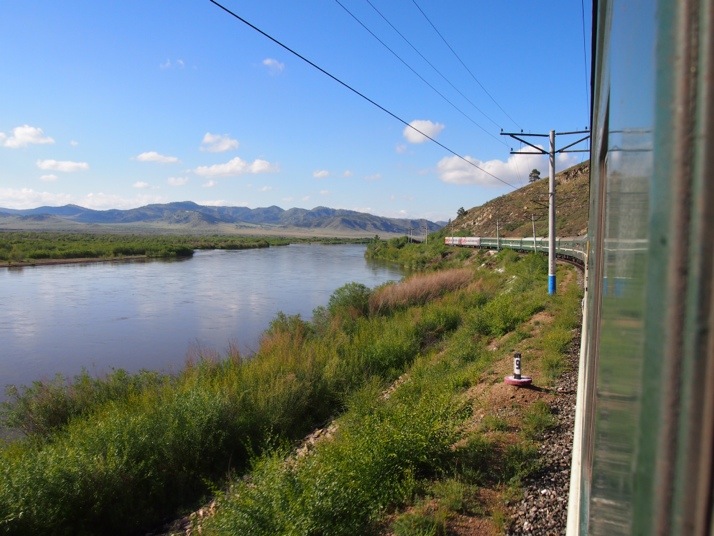 Looking along the length of the train as we leave Russia
Looking along the length of the train as we leave Russia
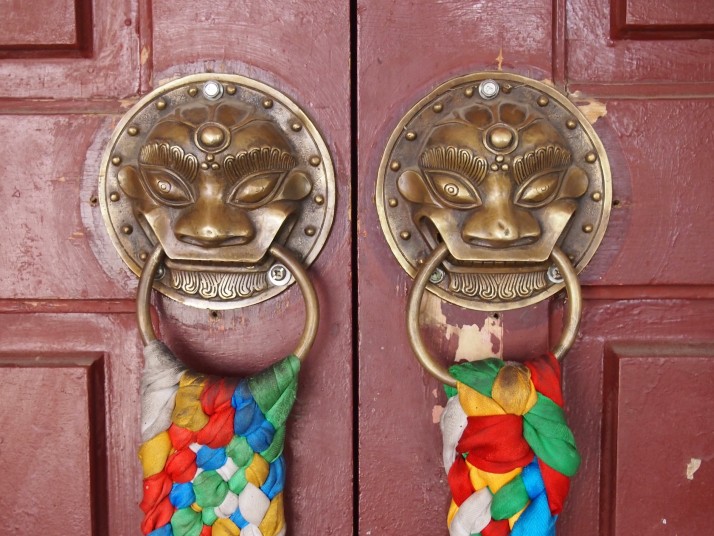 Door handles at Gandan Monastery in Ulaanbaatar, Mongolia
Door handles at Gandan Monastery in Ulaanbaatar, Mongolia
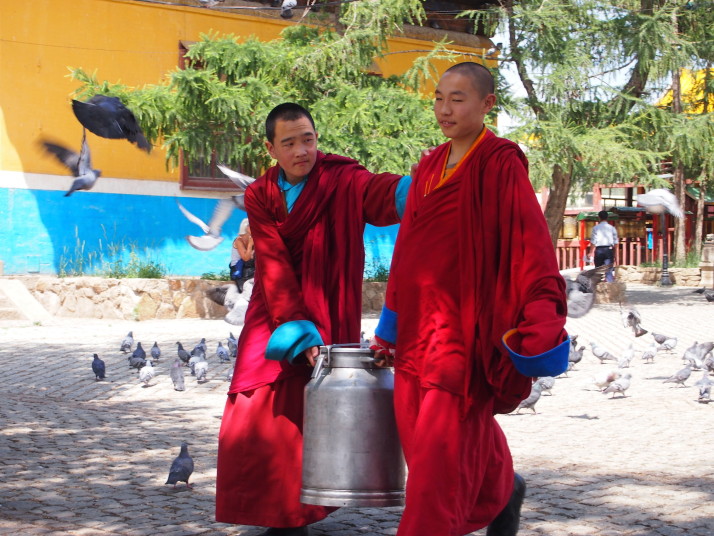 Young monks carrying a milk churn through Gandan Monastery, Ulaanbaatar
Young monks carrying a milk churn through Gandan Monastery, Ulaanbaatar
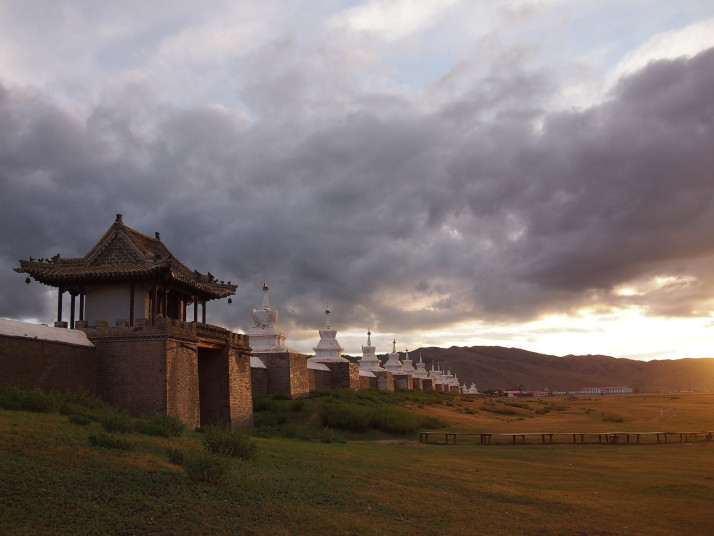 Sunset at Erdene Zuu monastery in Kharkhorin
Sunset at Erdene Zuu monastery in Kharkhorin
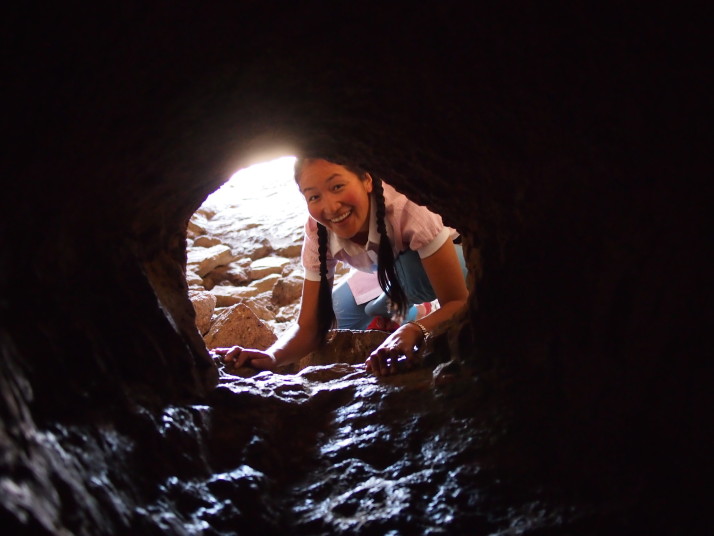 Oogii, the guide on our 9 day tour to the Gobi Desert in Mongolia
Oogii, the guide on our 9 day tour to the Gobi Desert in Mongolia
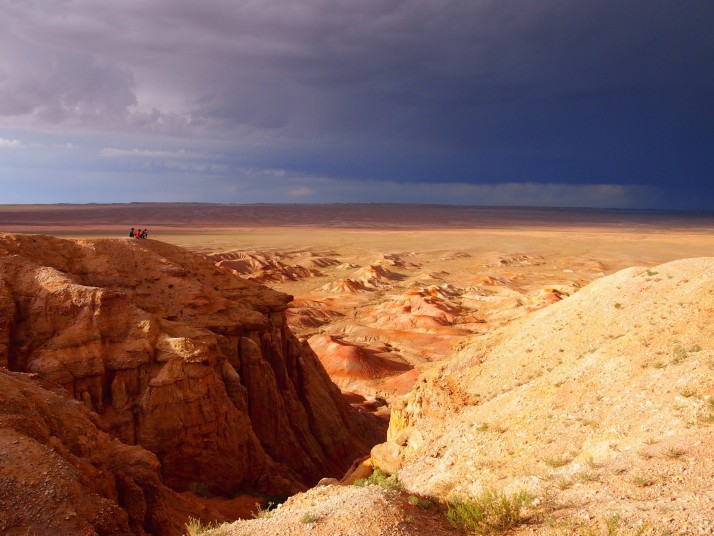 A thunderstorm swept through as we arrived Tsagaan Suvraga in Mongolia, leaving us with moody skies and sunlight with which to admire the eerie looking rock formations
A thunderstorm swept through as we arrived Tsagaan Suvraga in Mongolia, leaving us with moody skies and sunlight with which to admire the eerie looking rock formations
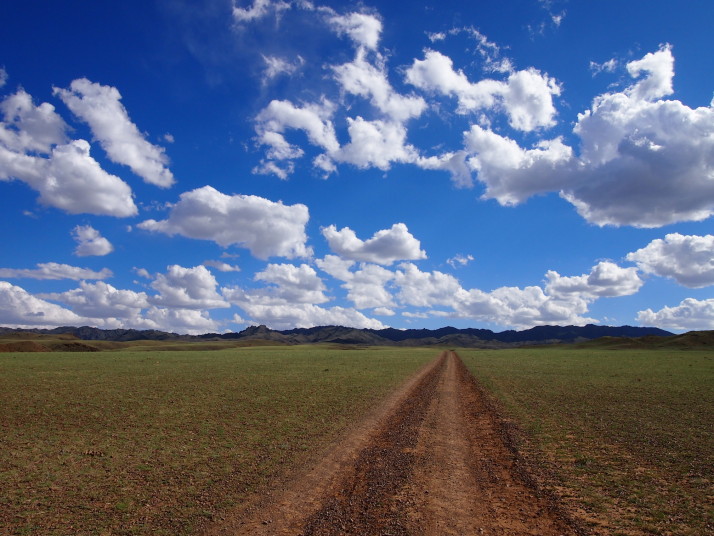 A typical road in Mongolia stretching off into the distance with no other man made feature in sight
A typical road in Mongolia stretching off into the distance with no other man made feature in sight
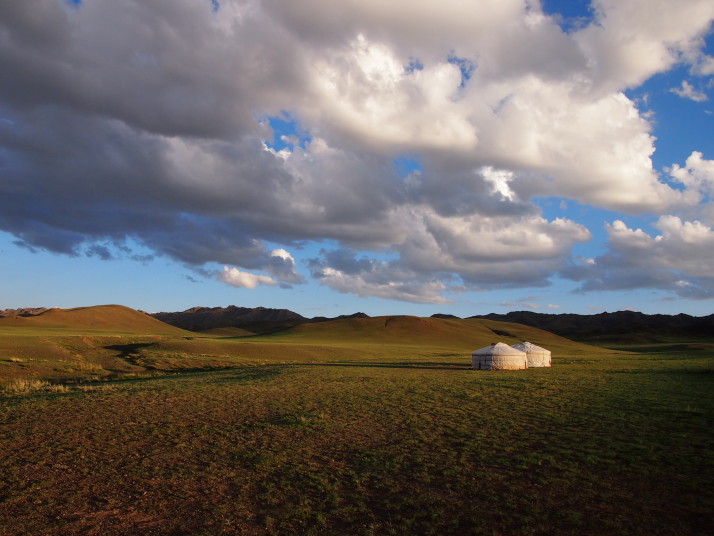 More than half of the Mongolian population still live in gers
More than half of the Mongolian population still live in gers
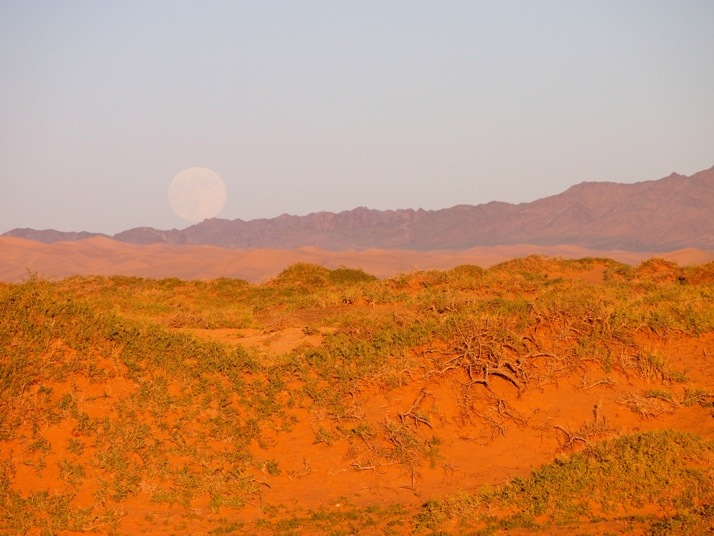 A huge full moon rising over the Gobi desert in Mongolia
A huge full moon rising over the Gobi desert in Mongolia
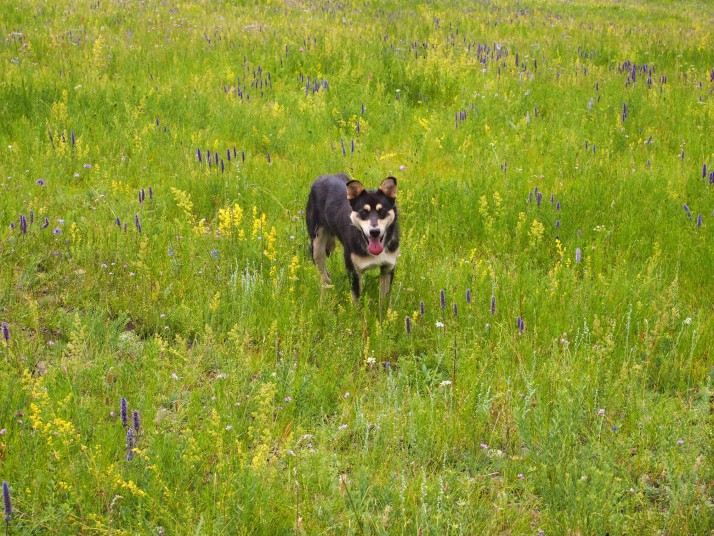 This dog decided to accompany us on a walk through Terelj National Park in eastern Mongolia. In honour of the great khaan we called him Chinggis!
This dog decided to accompany us on a walk through Terelj National Park in eastern Mongolia. In honour of the great khaan we called him Chinggis!
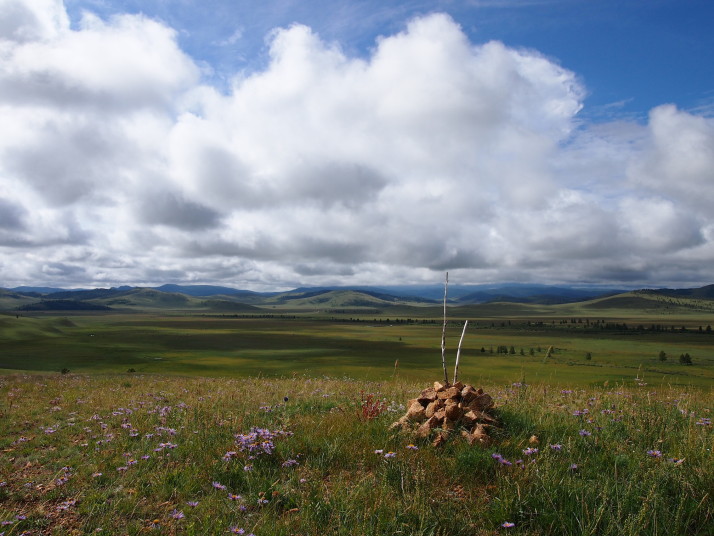 Ovoos, small cairns of rocks, are commonly found beside roads in Mongolia. Passing travellers add a rock to pray for a safe journey
Ovoos, small cairns of rocks, are commonly found beside roads in Mongolia. Passing travellers add a rock to pray for a safe journey
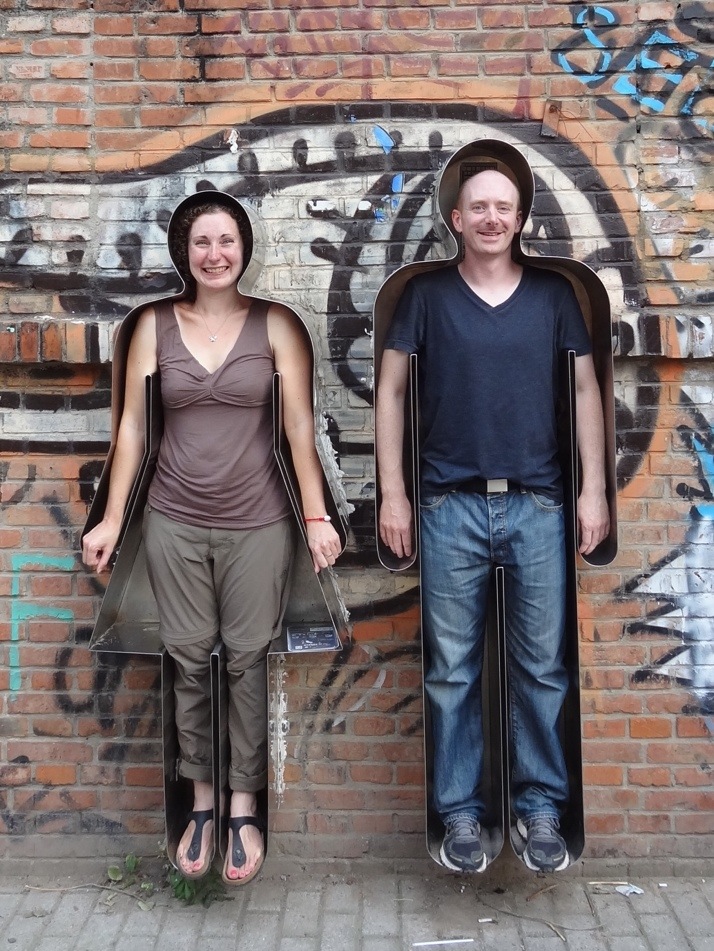 Actually this photo was taken on Andrew’s camera but I snuck it in as it always makes me smile. We found this public artwork in Beijing’s 798 District
Actually this photo was taken on Andrew’s camera but I snuck it in as it always makes me smile. We found this public artwork in Beijing’s 798 District
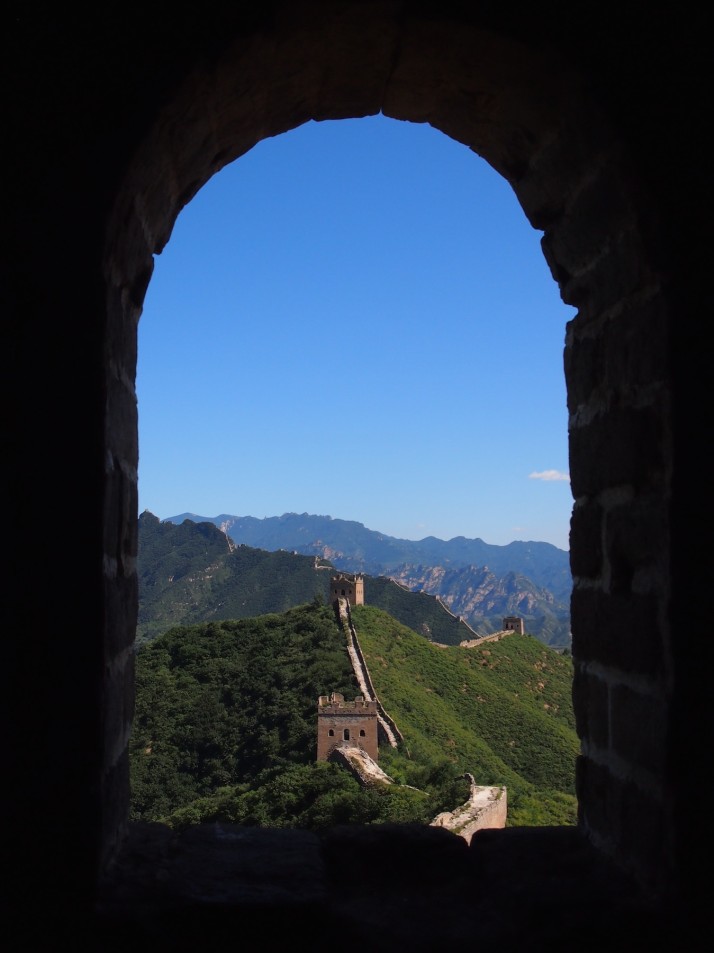 China’s Great Wall seen through a window in one of the towers of the Jinshanling section
China’s Great Wall seen through a window in one of the towers of the Jinshanling section
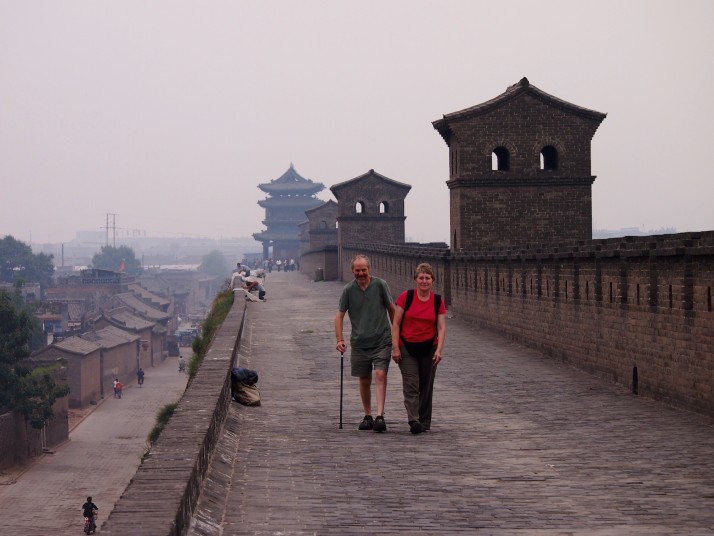 It was great to have my parents visit us for two weeks in China and I love this photo of them walking along Pingyao’s city wall
It was great to have my parents visit us for two weeks in China and I love this photo of them walking along Pingyao’s city wall
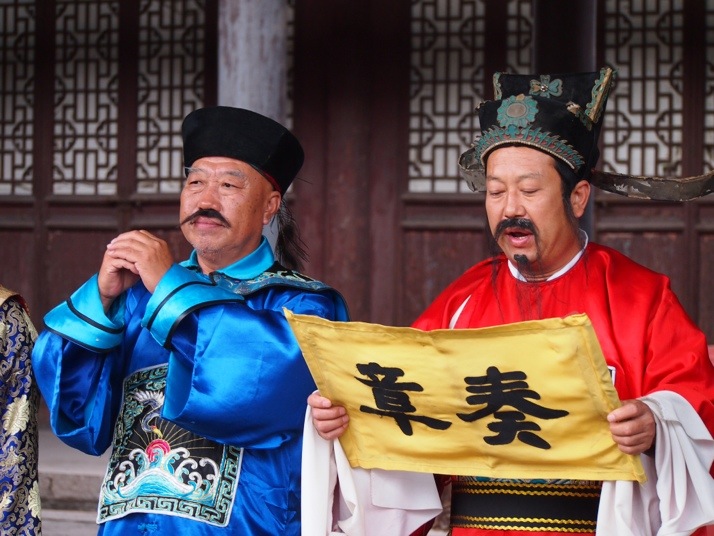 At the City God Temple in Pingyao we happened upon a play performed twice daily
At the City God Temple in Pingyao we happened upon a play performed twice daily
 Temple visitors in China try to throw a coin into the pot for good luck
Temple visitors in China try to throw a coin into the pot for good luck
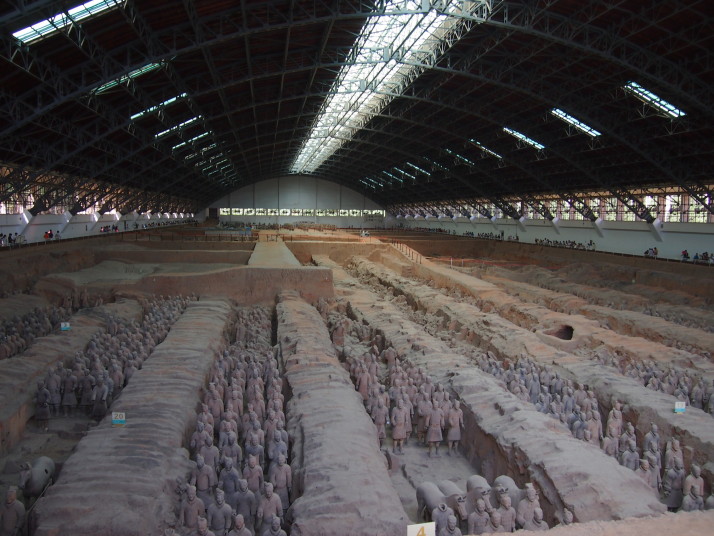 The scale of Pit 1 at the Tomb of the Terracotta Warriors near Xi’an took my breath away
The scale of Pit 1 at the Tomb of the Terracotta Warriors near Xi’an took my breath away
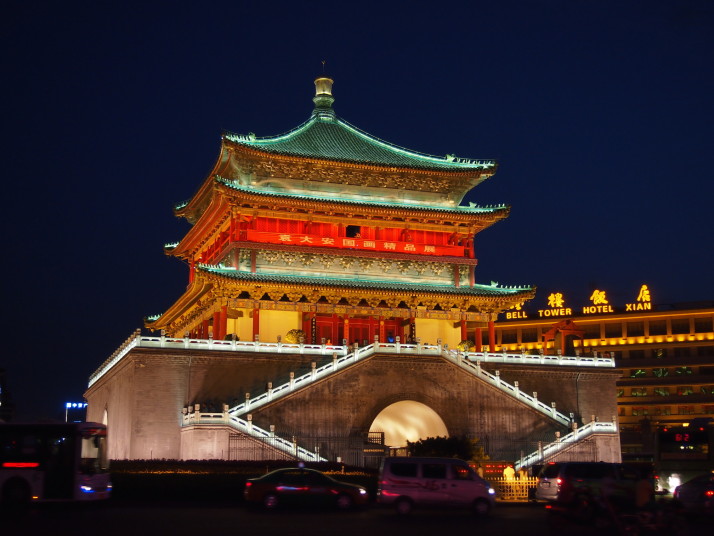 Bell tower in Xi’an – we never saw the bell, but judging by the size of the tower it must be pretty big!
Bell tower in Xi’an – we never saw the bell, but judging by the size of the tower it must be pretty big!
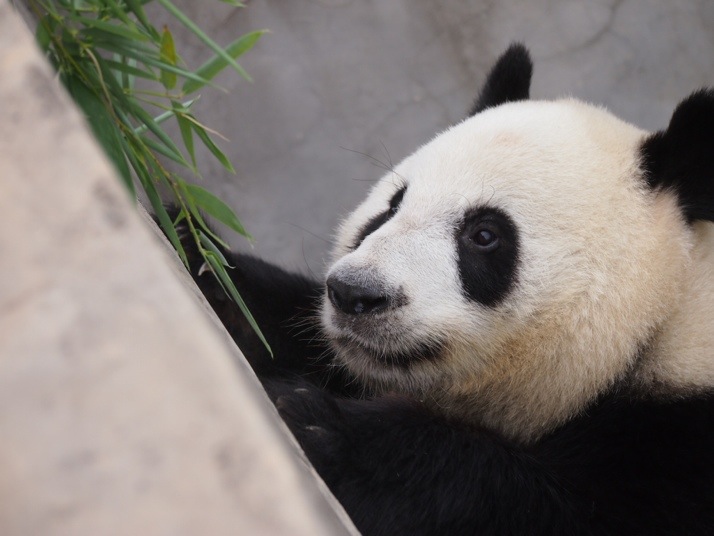 I would happily have spent hours watching the pandas at the breeding centre that we visited near Xi’an
I would happily have spent hours watching the pandas at the breeding centre that we visited near Xi’an
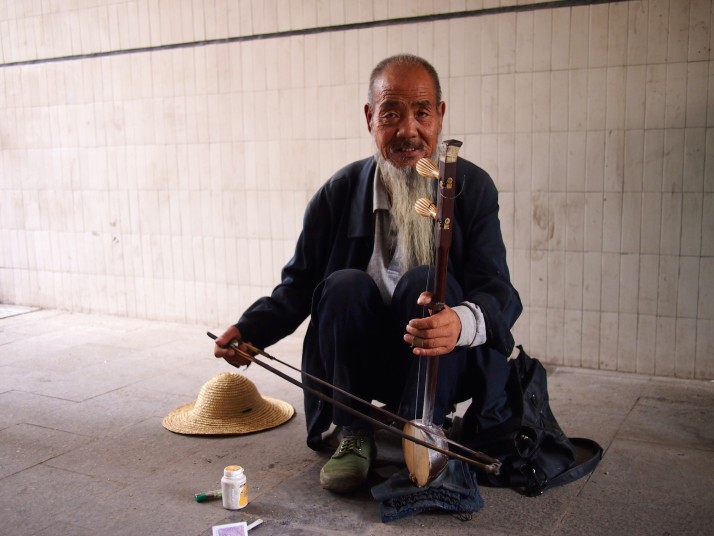 I don’t have many people photos from China, largely being too intimidated by the crowds I think, but I’m glad I stopped to ask this busker in Yinchuan if i could take his photo
I don’t have many people photos from China, largely being too intimidated by the crowds I think, but I’m glad I stopped to ask this busker in Yinchuan if i could take his photo
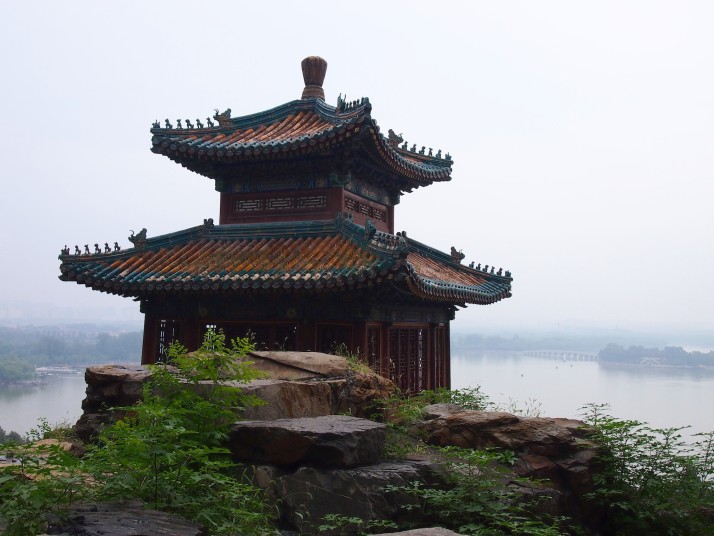 Side building near the Temple of Buddhist Virtue and view down to Kunming Lake at the Summer Palace in Beijing
Side building near the Temple of Buddhist Virtue and view down to Kunming Lake at the Summer Palace in Beijing
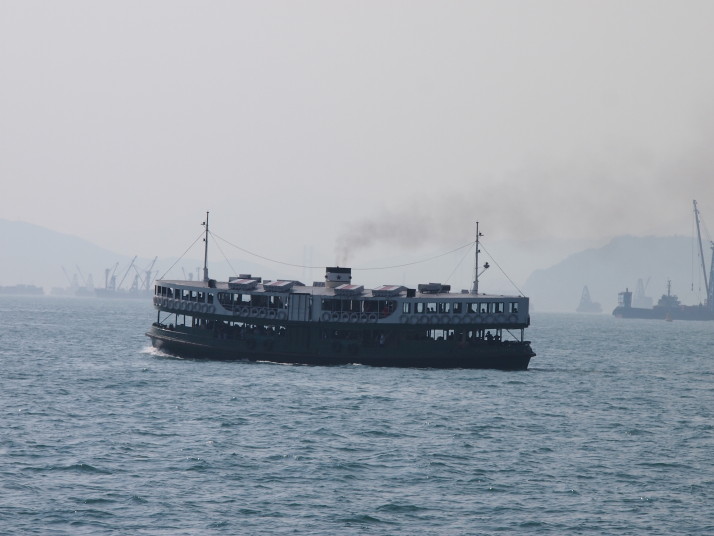 The Star Ferry which crosses Hong Kong’s harbour has a distinctly retro look
The Star Ferry which crosses Hong Kong’s harbour has a distinctly retro look
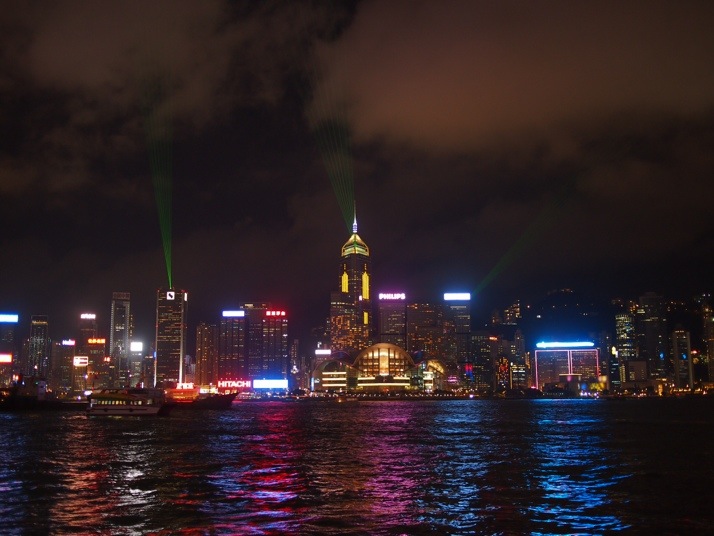 Hong Kong’s skyline is justifiably famous. Every evening at 8pm there is a free light show
Hong Kong’s skyline is justifiably famous. Every evening at 8pm there is a free light show
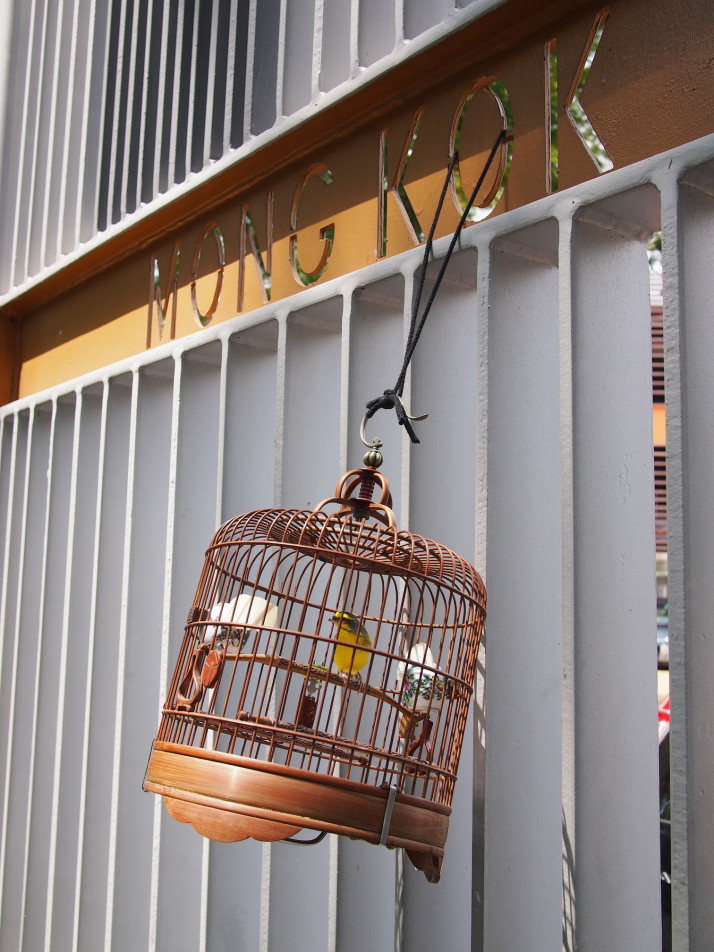 The Mong Kok area of Hong Kong is famous for its markets including song birds which locals keep as pets
The Mong Kok area of Hong Kong is famous for its markets including song birds which locals keep as pets
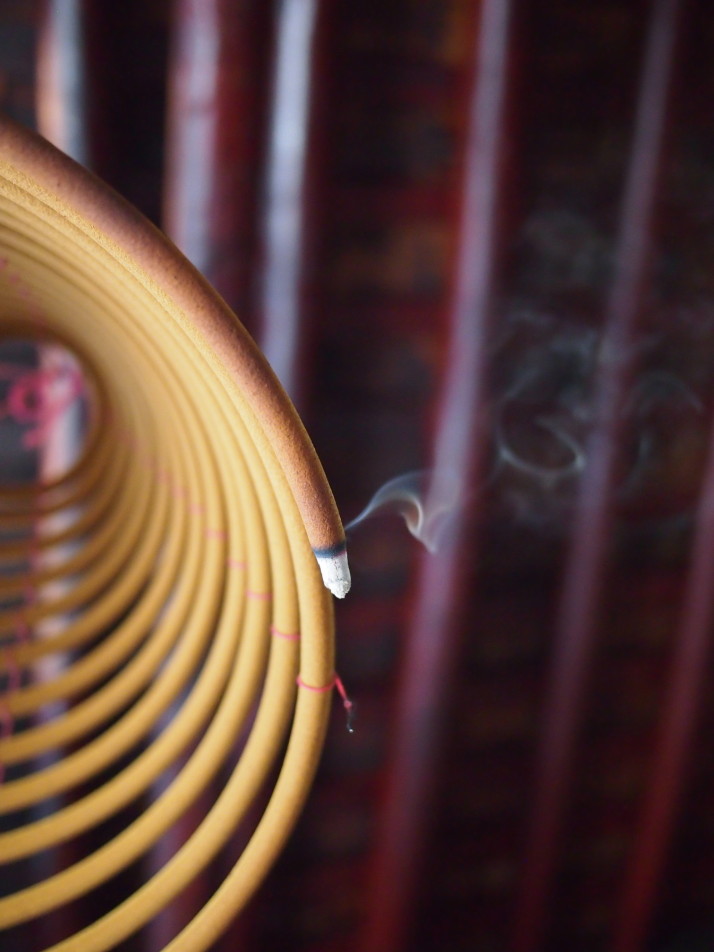 A burning incense coil hangs from the ceiling in one of Hong Kong’s temples
A burning incense coil hangs from the ceiling in one of Hong Kong’s temples
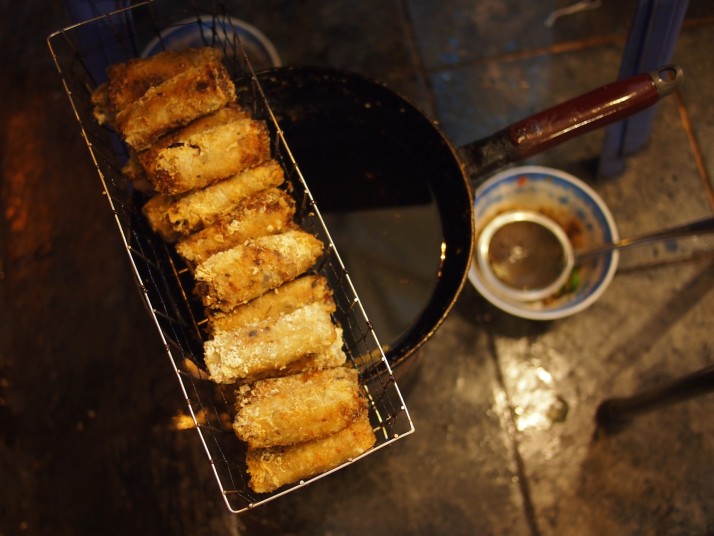 We found the world’s best spring rolls in a small restaurant in Hanoi, Vietnam
We found the world’s best spring rolls in a small restaurant in Hanoi, Vietnam
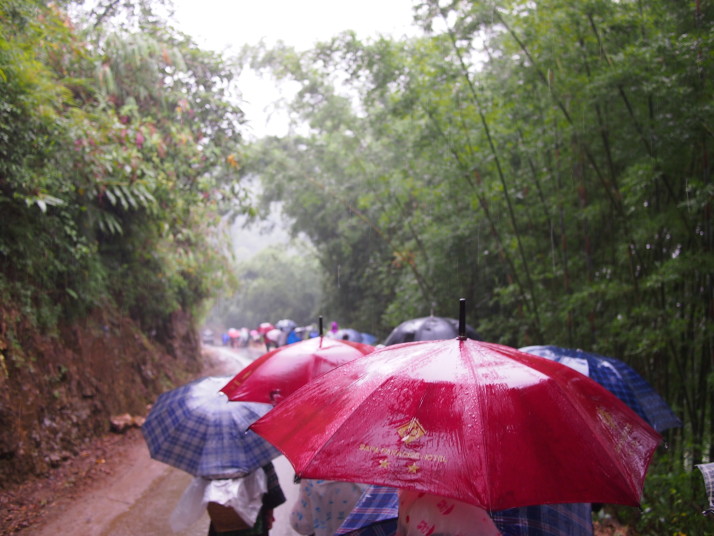 We joined a very rainy walk to some local villages along with an entourage of local ladies selling crafts during our stay in Sa Pa in northern Vietnam
We joined a very rainy walk to some local villages along with an entourage of local ladies selling crafts during our stay in Sa Pa in northern Vietnam
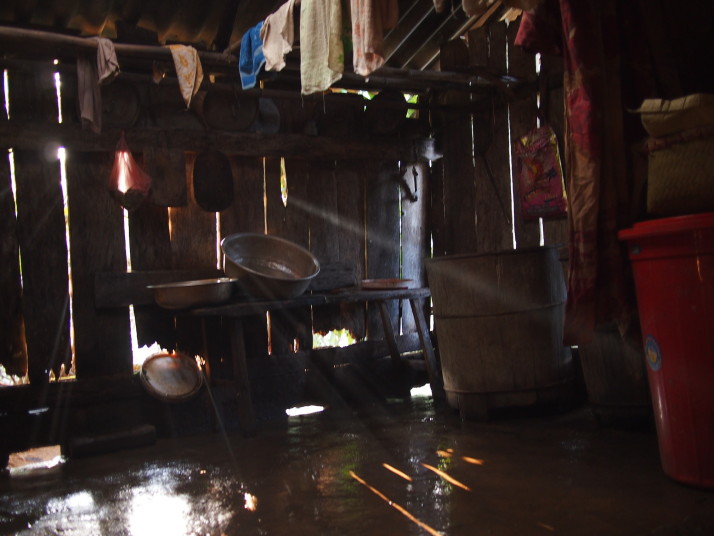 During a homestay visit near Sa Pa we took a traditional herbal bath in the house of the sister of our host family
During a homestay visit near Sa Pa we took a traditional herbal bath in the house of the sister of our host family
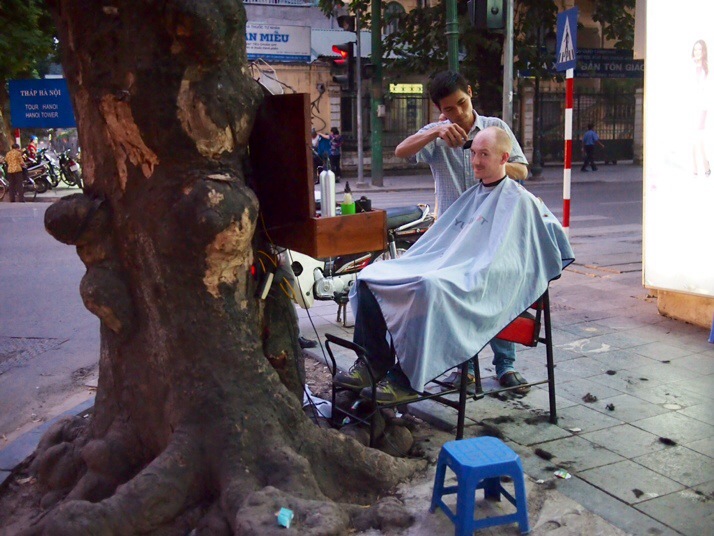 Andrew having the first of many street-side haircuts, this one was in Hanoi
Andrew having the first of many street-side haircuts, this one was in Hanoi
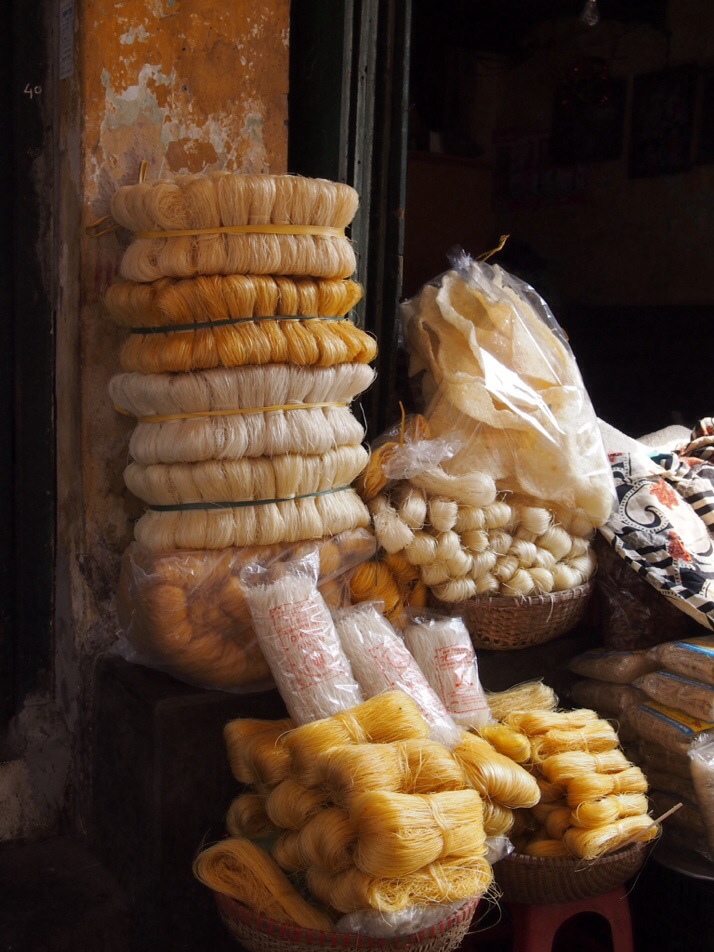 There are far more varieties of noodles than I ever dreamed of for sale in Vietnam
There are far more varieties of noodles than I ever dreamed of for sale in Vietnam
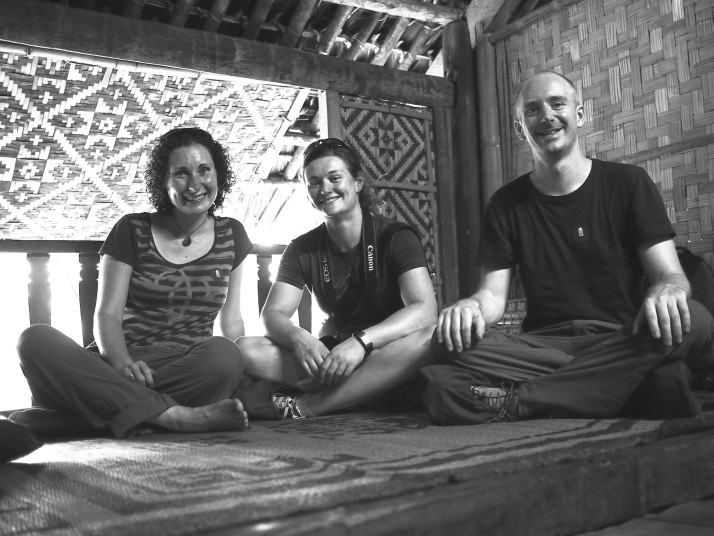 Our friend Jo visited us for the first time in Vietnam. I was trying to brighten this photo which we took at the Vietnam Museum of Ethnology and really liked the effect I got by changing it to black and white
Our friend Jo visited us for the first time in Vietnam. I was trying to brighten this photo which we took at the Vietnam Museum of Ethnology and really liked the effect I got by changing it to black and white
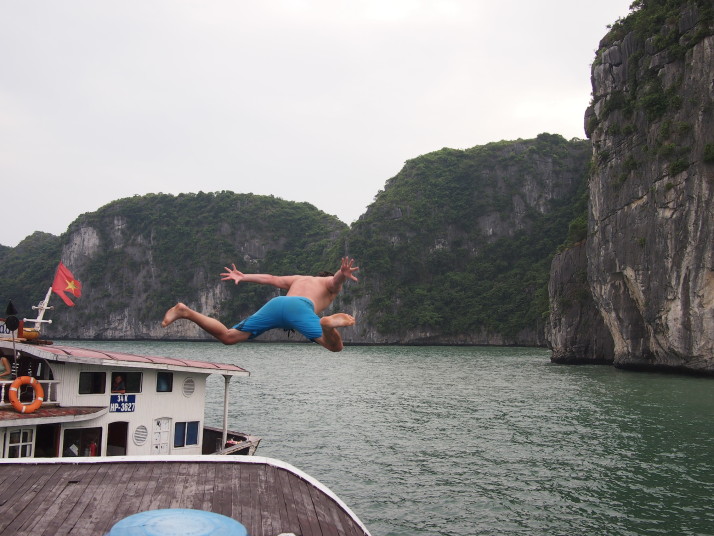 One of our fellow daytrippers diving off the boat during our cruise around Ha Long Bay from Cat Ba Island
One of our fellow daytrippers diving off the boat during our cruise around Ha Long Bay from Cat Ba Island
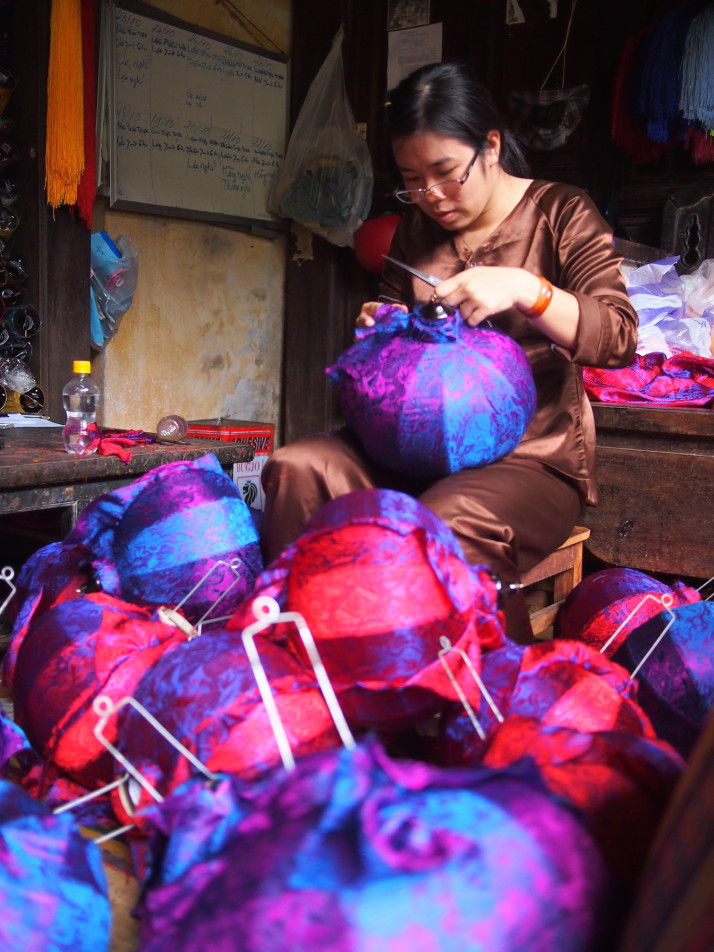 A lady making silk lanterns at a craft shop in Hoi An
A lady making silk lanterns at a craft shop in Hoi An
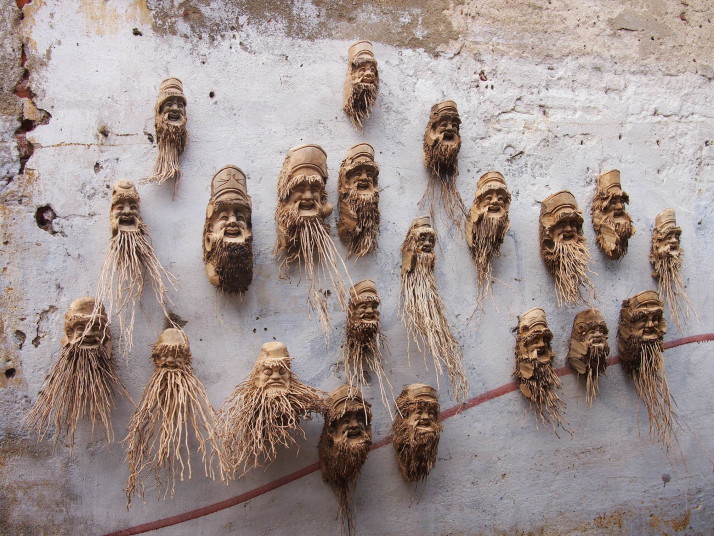 Wooden masks on a wall in Hoi An, Vietnam
Wooden masks on a wall in Hoi An, Vietnam
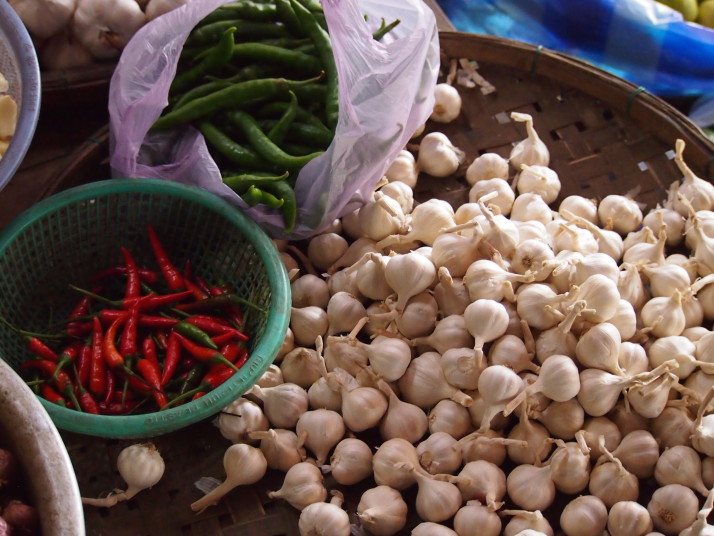 Garlic and chillis are frequently used in Vietnamese cuisine
Garlic and chillis are frequently used in Vietnamese cuisine
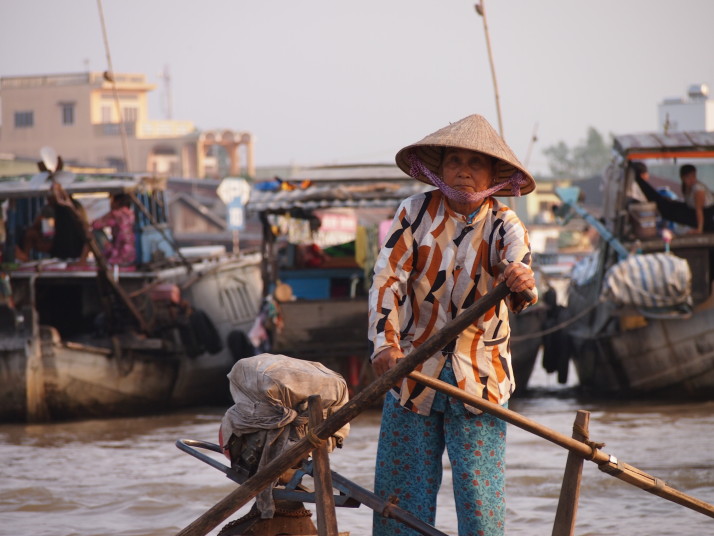 The floating market at Cai Rang was fascinating and we loved watching the locals’ standing up rowing technique
The floating market at Cai Rang was fascinating and we loved watching the locals’ standing up rowing technique
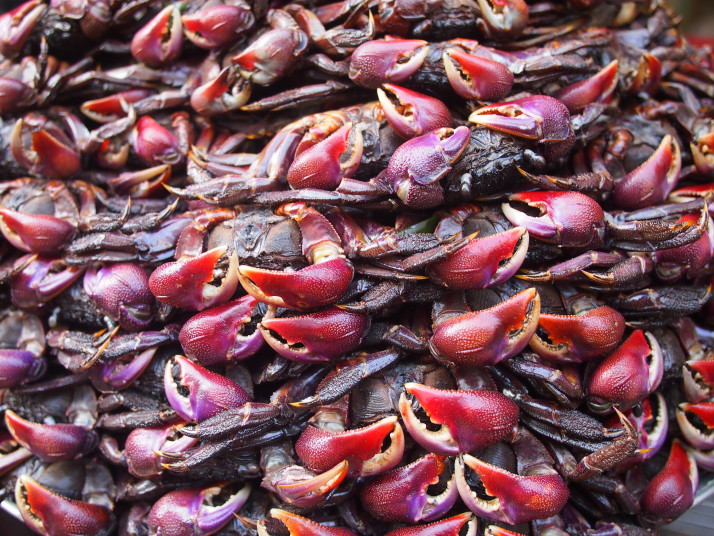 Crabs for sale at the Cai Rang land market
Crabs for sale at the Cai Rang land market
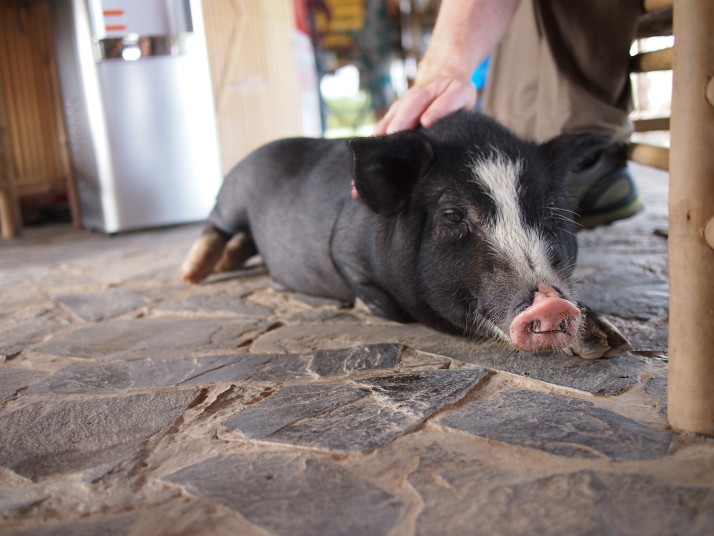 Bacon, the pet pig at Nguyen Shack homestay made very cute grunting noises when we scratched his back
Bacon, the pet pig at Nguyen Shack homestay made very cute grunting noises when we scratched his back
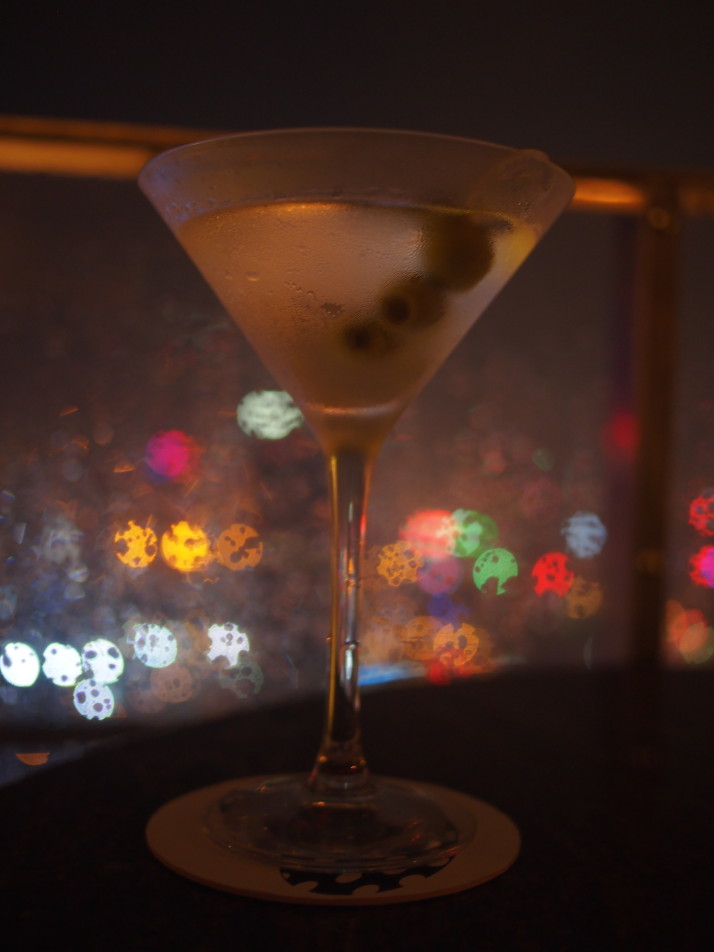 Our trip was occasionally glamorous… To celebrate an incredible two weeks travelling through Vietnam with Jo we had cocktails in the rooftop bar of the Sheraton Hotel
Our trip was occasionally glamorous… To celebrate an incredible two weeks travelling through Vietnam with Jo we had cocktails in the rooftop bar of the Sheraton Hotel
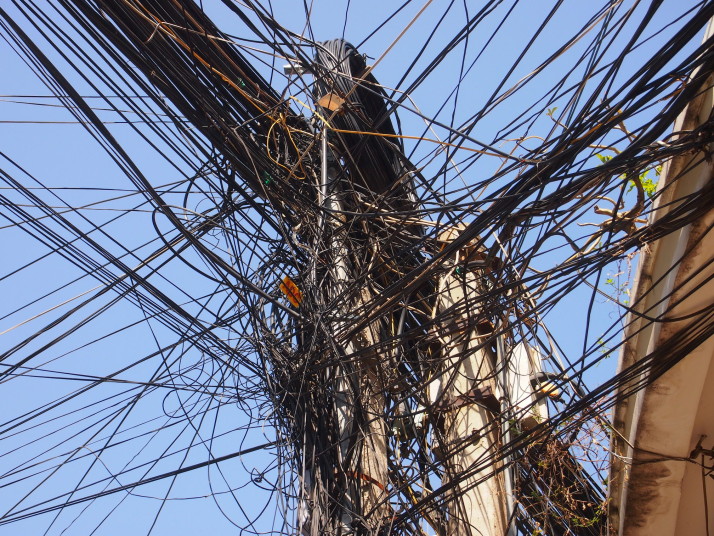 We really felt for the guys who have to fix any faults with the electrical systems in China and Southeast Asia. This tangle was above the streets in Phnom Penh.
We really felt for the guys who have to fix any faults with the electrical systems in China and Southeast Asia. This tangle was above the streets in Phnom Penh.
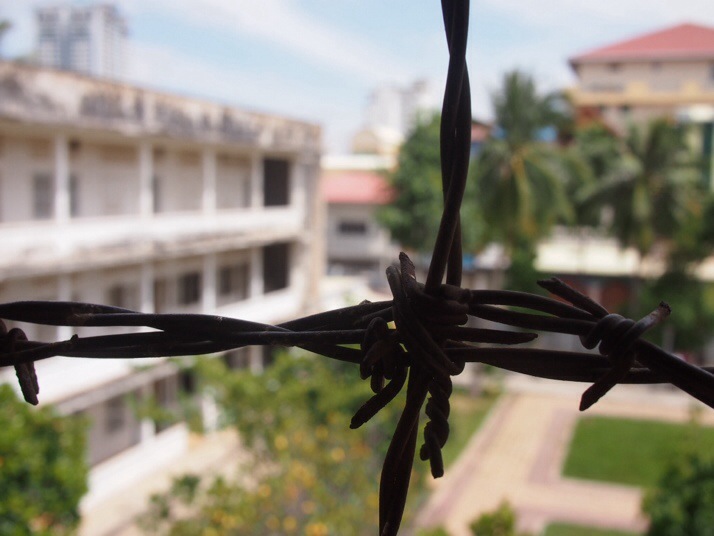 The atrocities committed at the Tuol Sleng prison in Phnom Penh during Pol Pot’s regime defy belief
The atrocities committed at the Tuol Sleng prison in Phnom Penh during Pol Pot’s regime defy belief
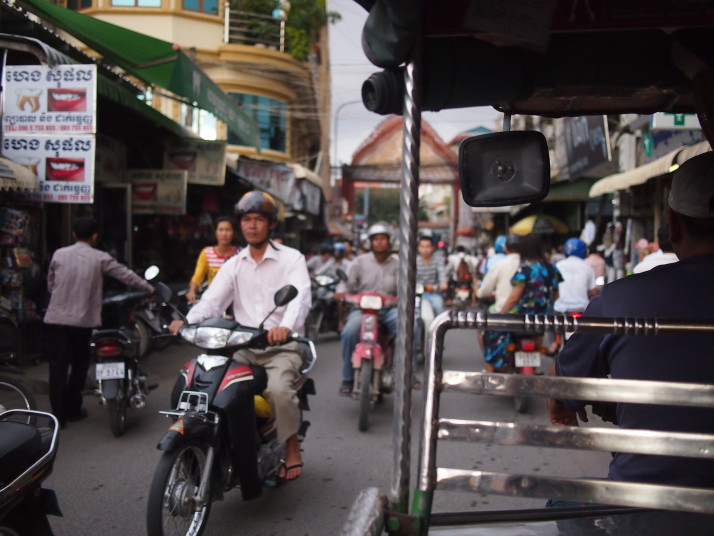 Rush hour in Phnom Penh, Cambodia, as seen from the back seat of a tuk-tuk
Rush hour in Phnom Penh, Cambodia, as seen from the back seat of a tuk-tuk
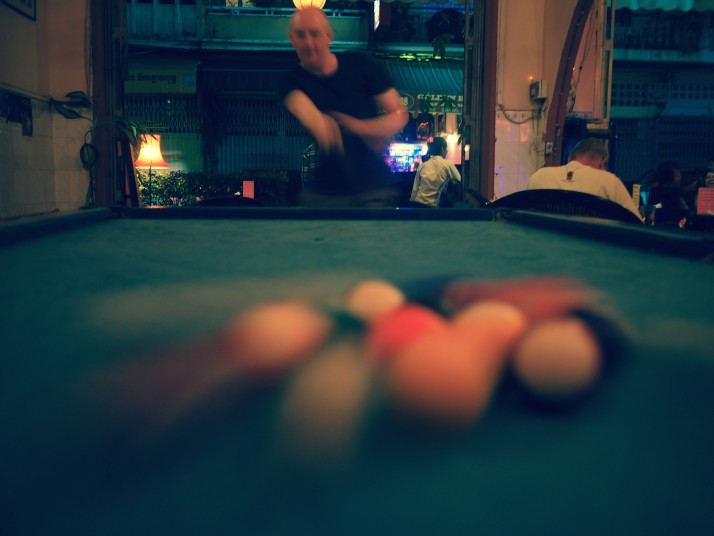 Andrew breaking the pool balls in a bar on street 172, Phnom Penh
Andrew breaking the pool balls in a bar on street 172, Phnom Penh
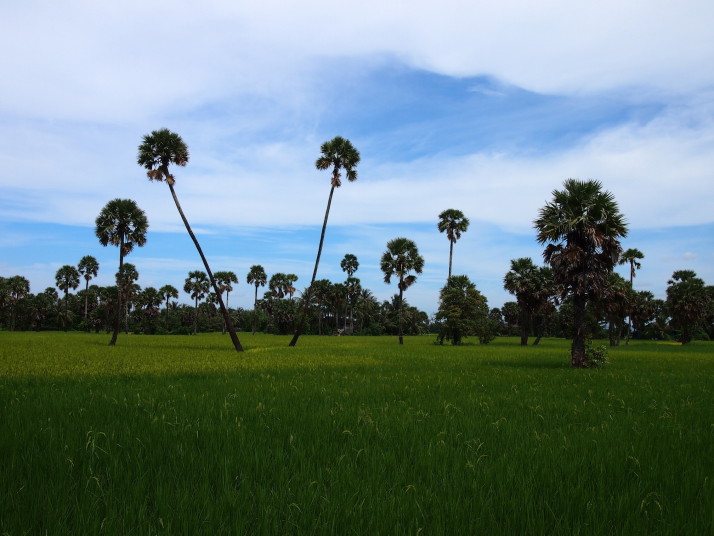 Palm trees and rice paddies near Kampot, Cambodia
Palm trees and rice paddies near Kampot, Cambodia
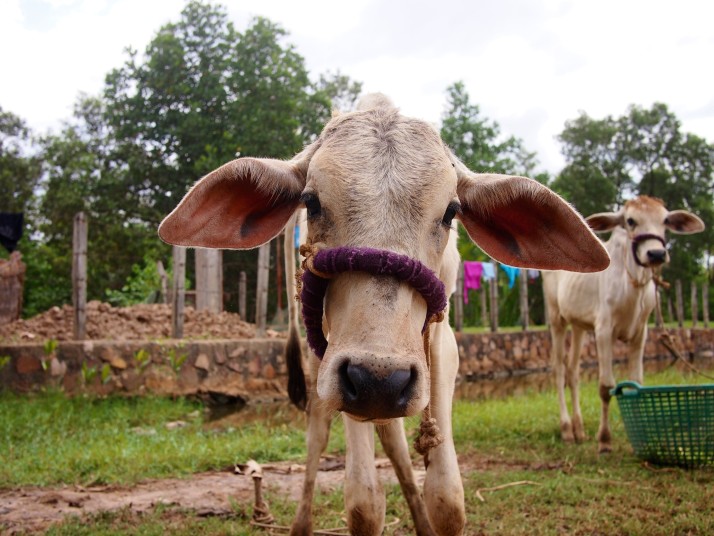 A curious calf near Kampot, Cambodia
A curious calf near Kampot, Cambodia
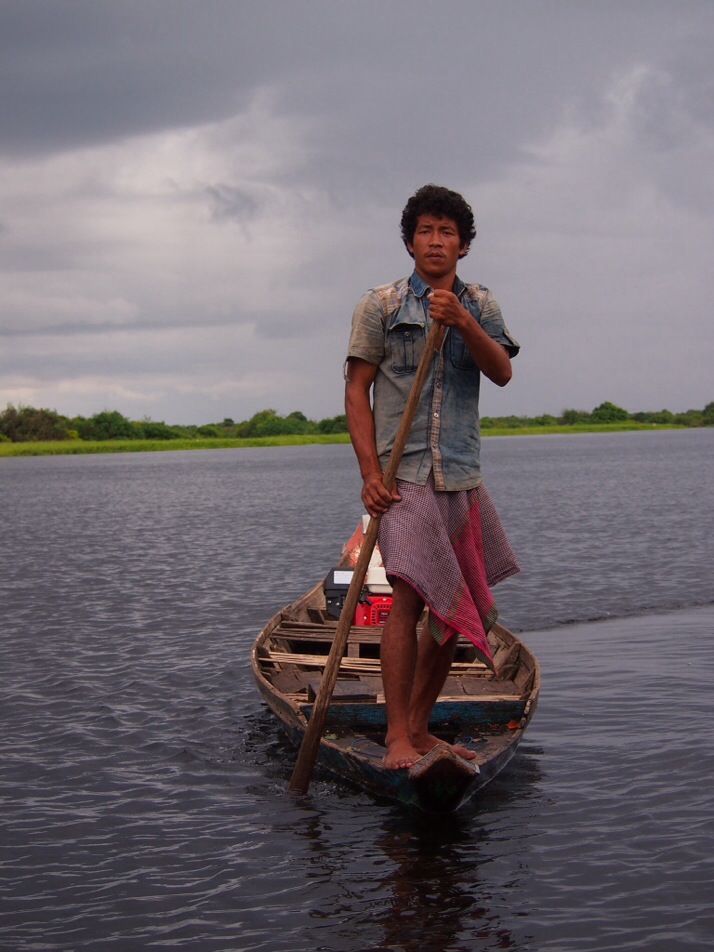 A man paddling across to collect a box from the boat we took from Battambang to Siem Reap
A man paddling across to collect a box from the boat we took from Battambang to Siem Reap
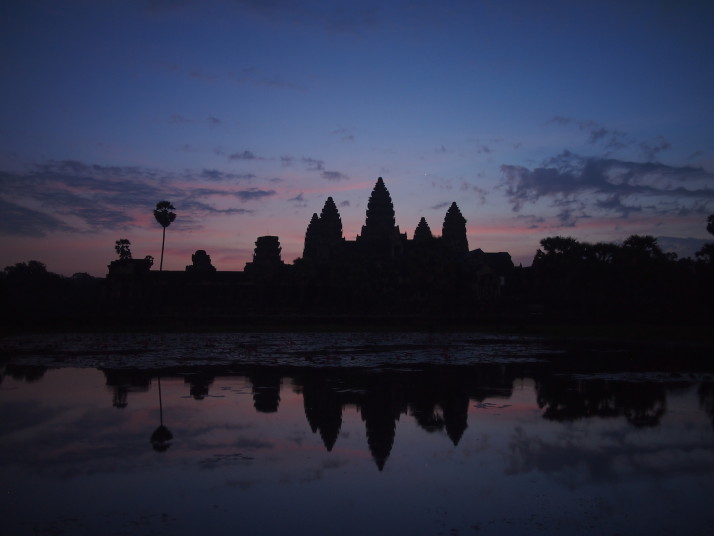 It was worth getting up at 4am to see the sky slowly turning pink behind the iconic towers of Angkor Wat
It was worth getting up at 4am to see the sky slowly turning pink behind the iconic towers of Angkor Wat
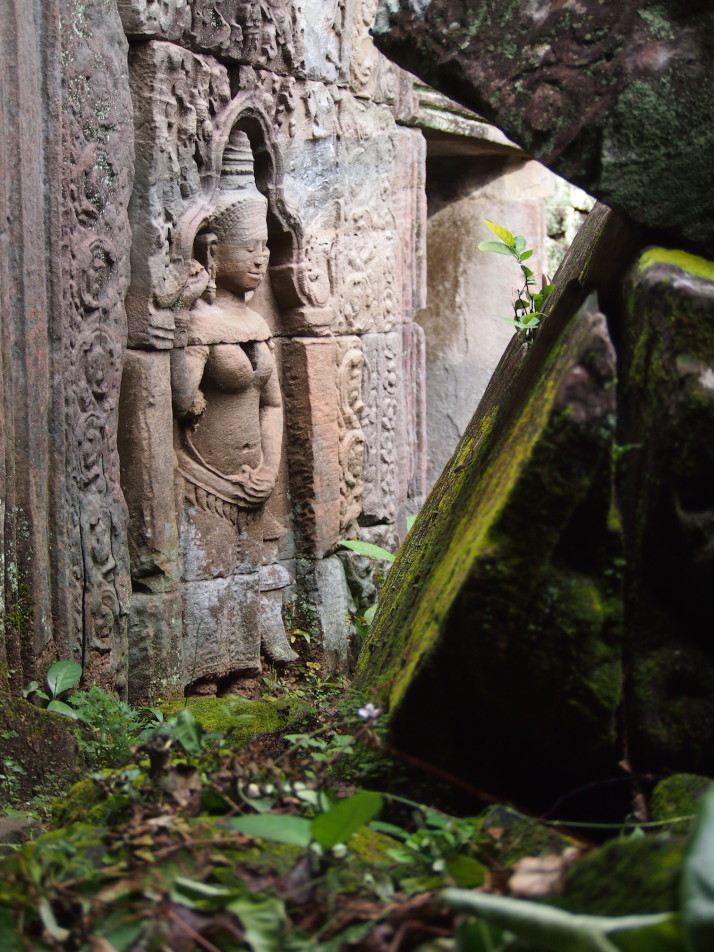 Stone carving detail at Preah Khan temple, Angkor
Stone carving detail at Preah Khan temple, Angkor
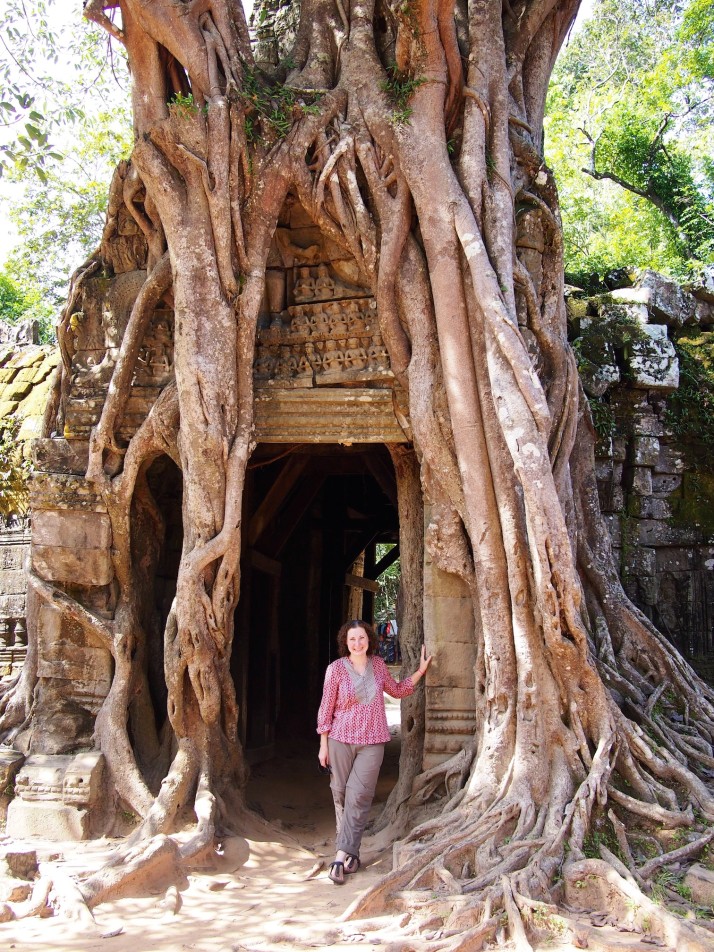 Tree roots engulfing a gate at Ta Som temple near Siem Reap
Tree roots engulfing a gate at Ta Som temple near Siem Reap
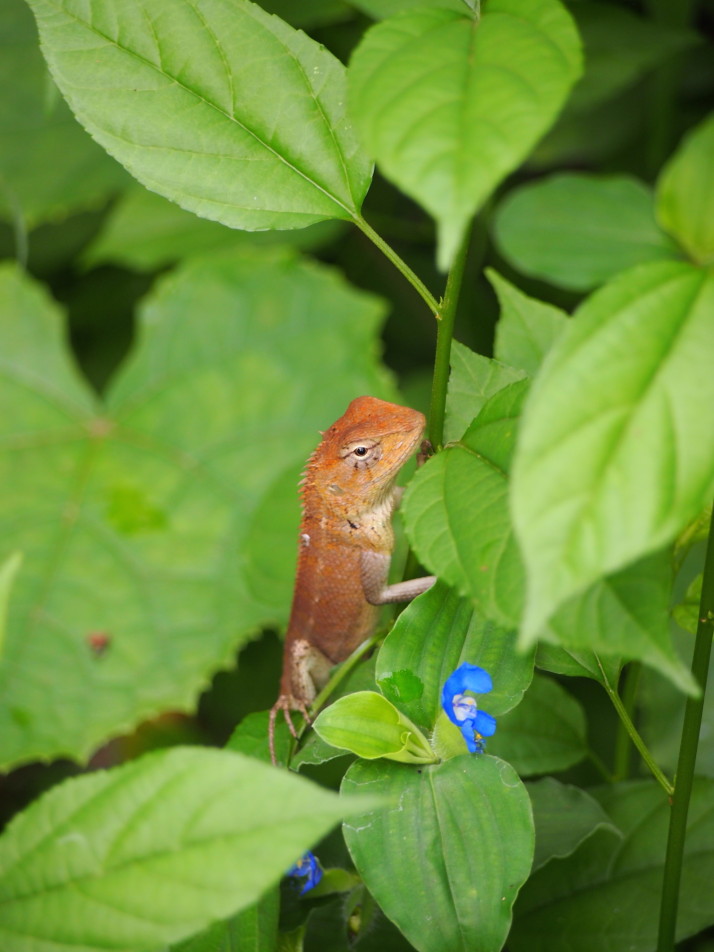 A Changeable Lizard in the undergrowth at Bakong temple, Roluos Group, near Siem Reap
A Changeable Lizard in the undergrowth at Bakong temple, Roluos Group, near Siem Reap
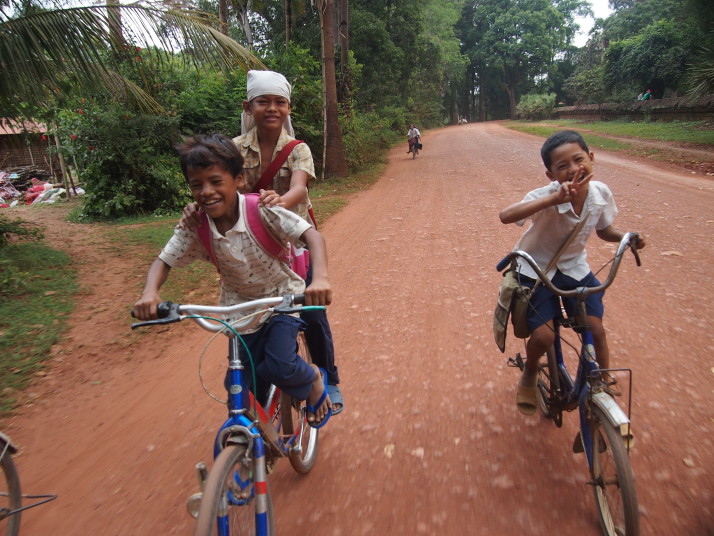 These Cambodian boys thought it would be a hoot to chase after our tuk-tuk on their bikes when we drove past!
These Cambodian boys thought it would be a hoot to chase after our tuk-tuk on their bikes when we drove past!
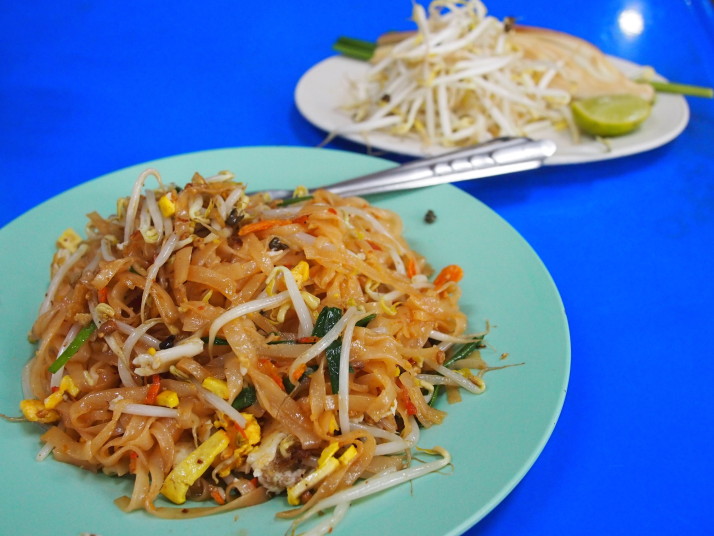 Pad Thai was one of our favourite Thai street food meals
Pad Thai was one of our favourite Thai street food meals
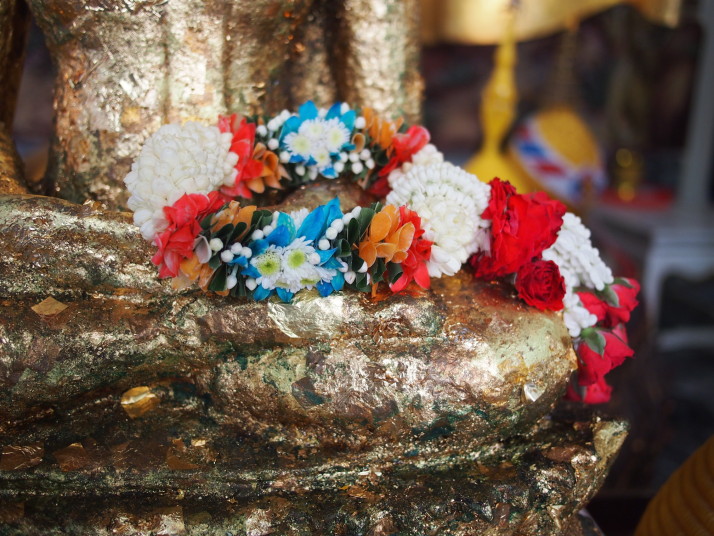 Buddha statue detail covered with offerings of flowers and gold leaf at Wat Pho, Bangkok
Buddha statue detail covered with offerings of flowers and gold leaf at Wat Pho, Bangkok
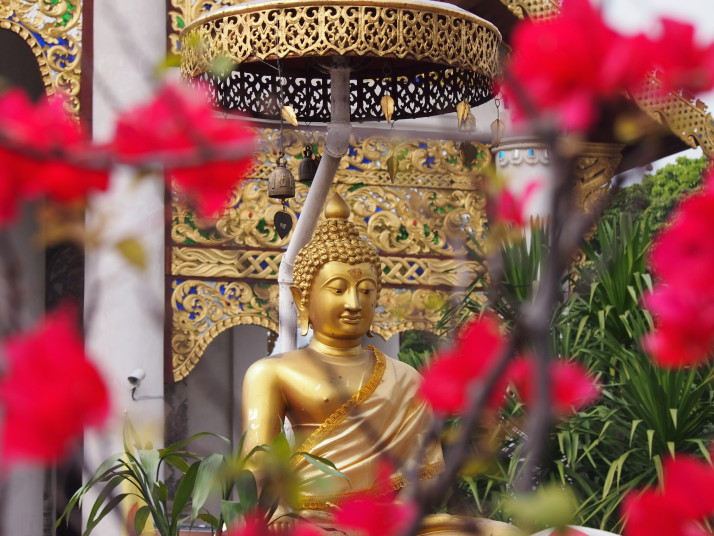 Buddha statue at Wat Chedi Luang, Chiang Mai
Buddha statue at Wat Chedi Luang, Chiang Mai
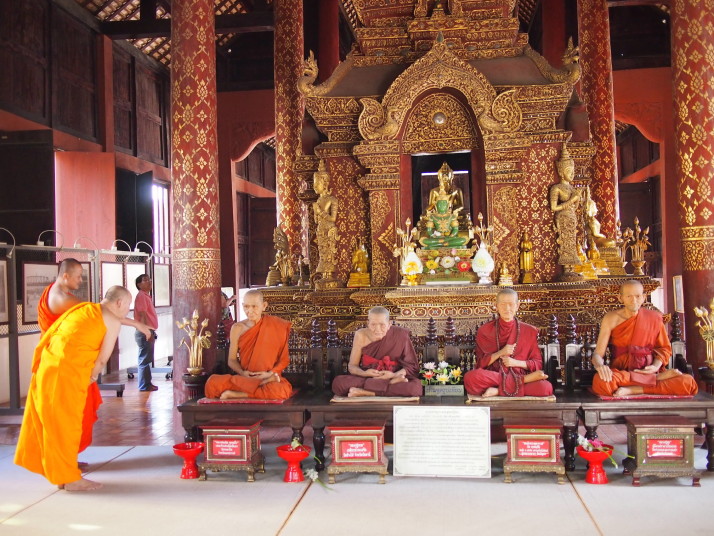 Real monks checking out the spookily lifelike fibreglass models of their venerated predecessors at Wat Pha Singh, Chiang Mai
Real monks checking out the spookily lifelike fibreglass models of their venerated predecessors at Wat Pha Singh, Chiang Mai
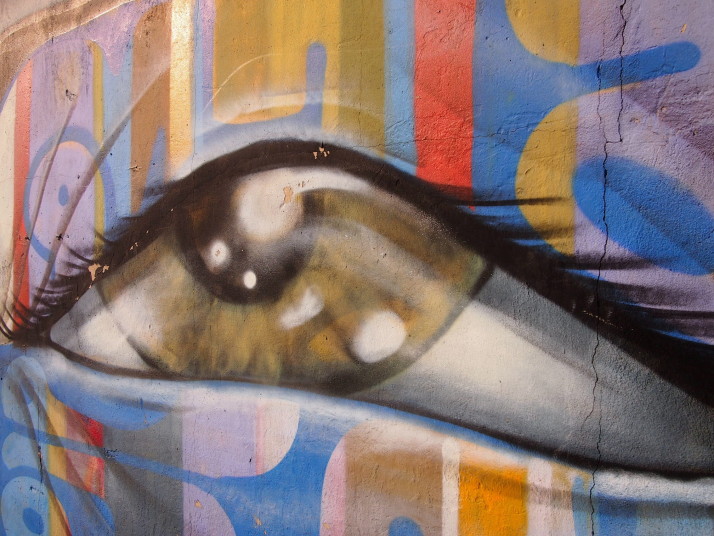 Street art in Chiang Mai, Thailand
Street art in Chiang Mai, Thailand
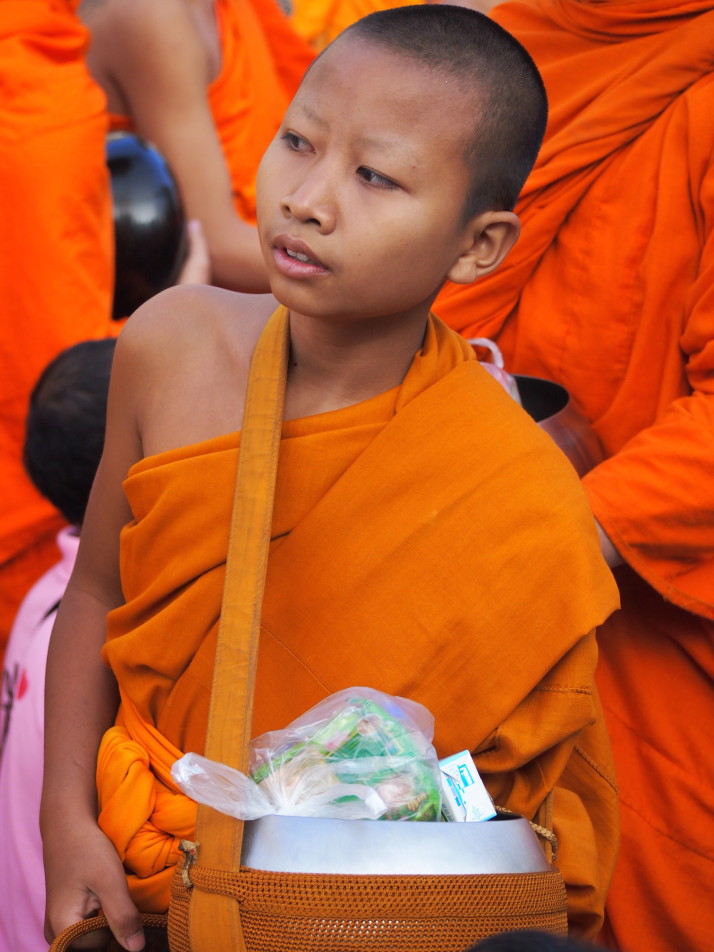 A young monk collecting alms at the annual alms-giving to 10,000 monks in Chiang Mai
A young monk collecting alms at the annual alms-giving to 10,000 monks in Chiang Mai
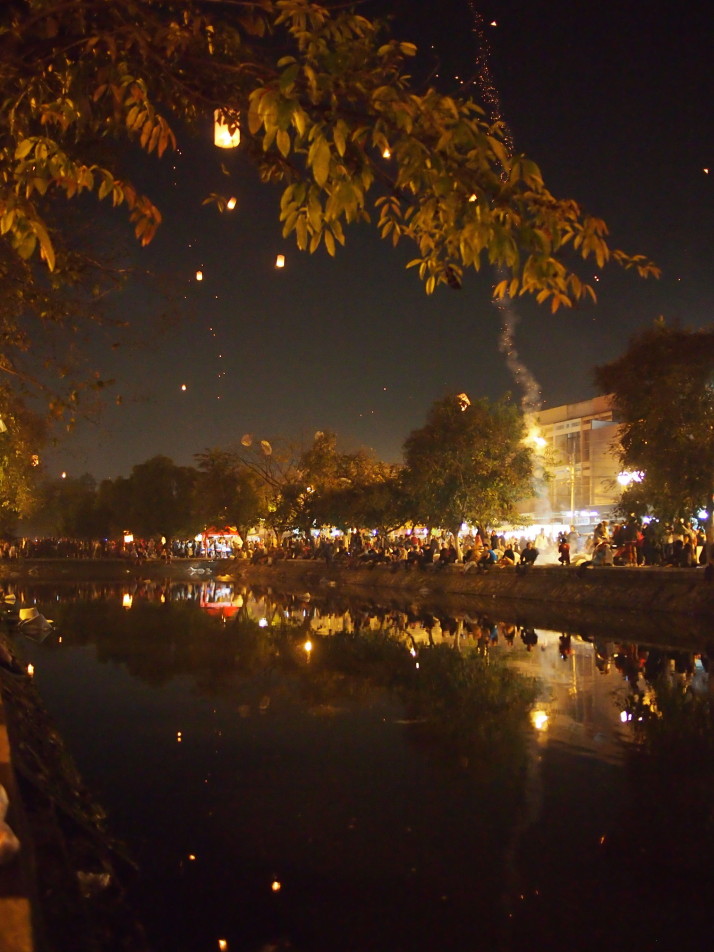 Lanterns floating above the moat beside Chalyaphum Road in Chiang Mai to wish for good fortune in the New Year
Lanterns floating above the moat beside Chalyaphum Road in Chiang Mai to wish for good fortune in the New Year
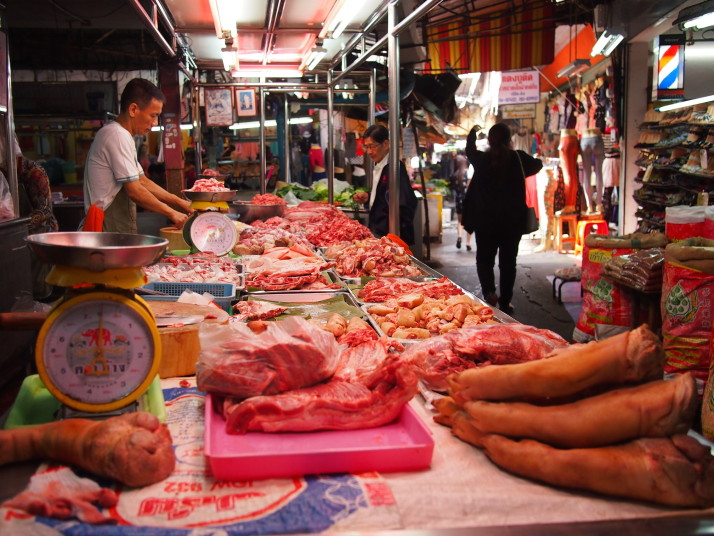 A butcher’s stall at the Tonlamyai market in Chiang Mai
A butcher’s stall at the Tonlamyai market in Chiang Mai
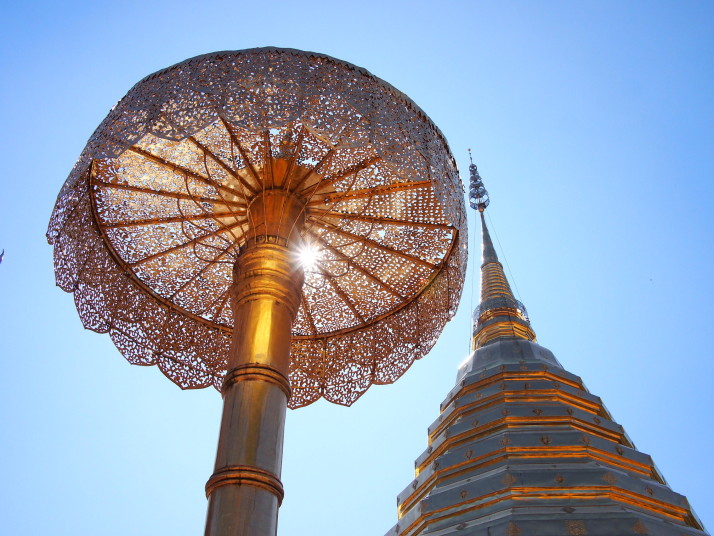 Wat Prathat Doi Suthep stands on a hilltop overlooking Chiang Mai and is notable for the amount of gold covering its monuments
Wat Prathat Doi Suthep stands on a hilltop overlooking Chiang Mai and is notable for the amount of gold covering its monuments
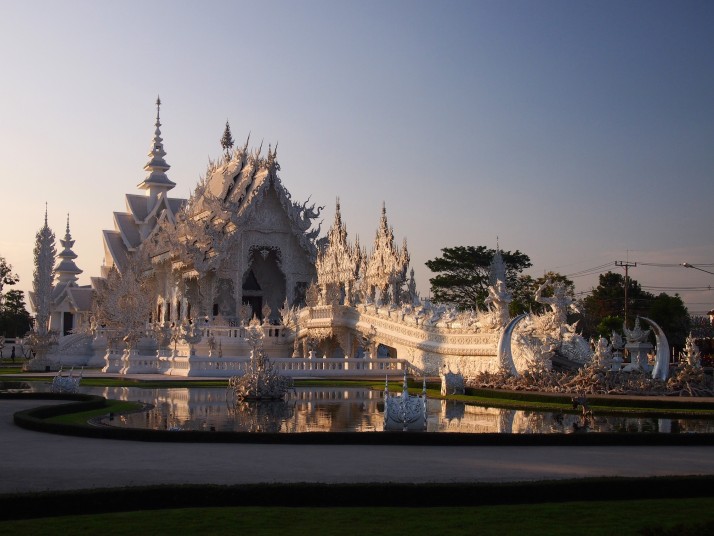 The intricate White Temple near Chiang Rai is full of popular culture references as well as traditional Buddhist iconography
The intricate White Temple near Chiang Rai is full of popular culture references as well as traditional Buddhist iconography
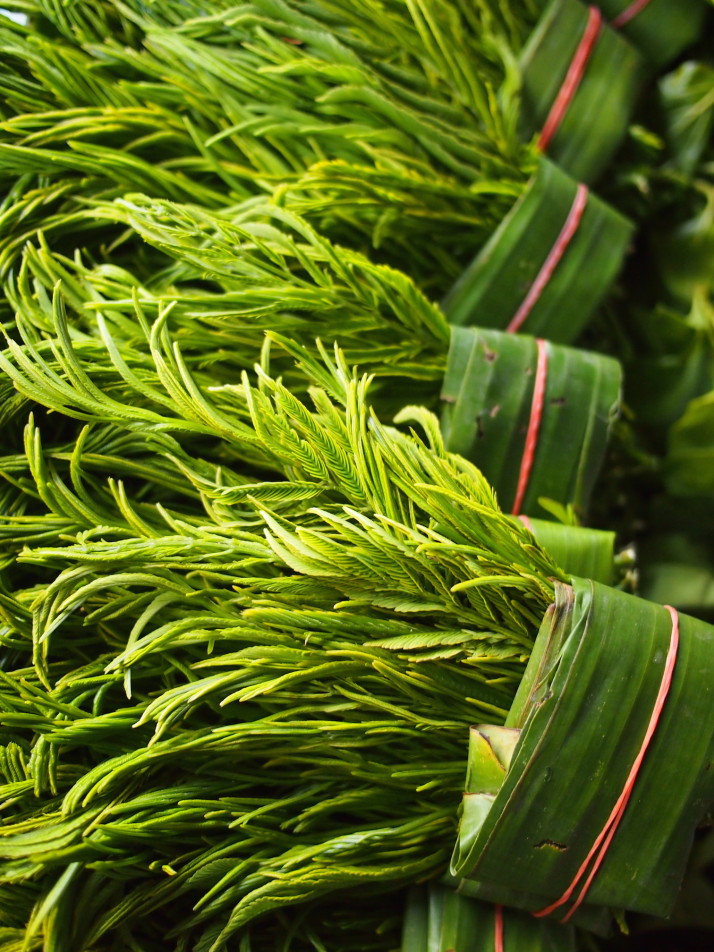 Bundles of herbs for sale in the market near the cookery class we took in Chiang Mai
Bundles of herbs for sale in the market near the cookery class we took in Chiang Mai
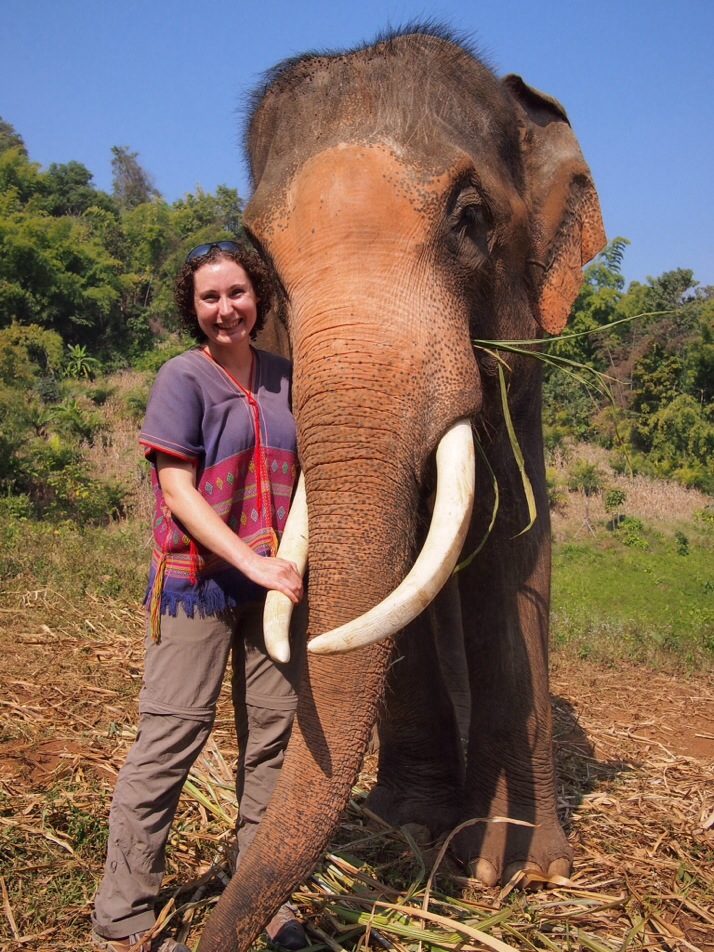 With my elephant Bunjun on our day as elephant owners
With my elephant Bunjun on our day as elephant owners
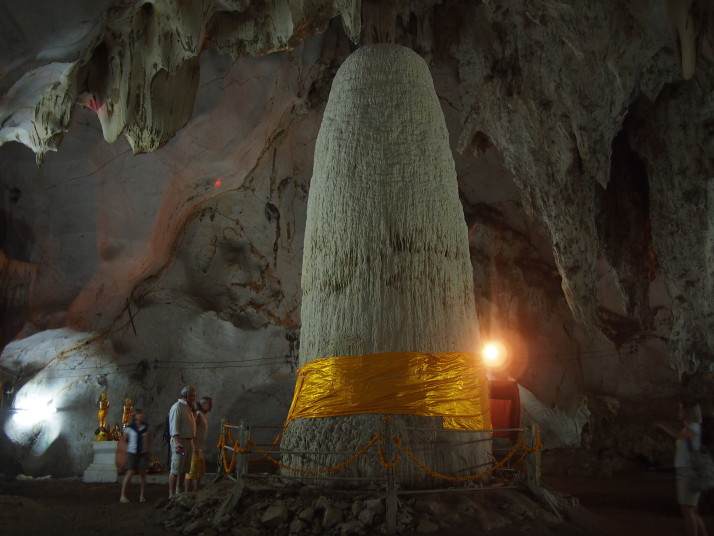 Stalagmite in Mueng On Cave, north of Chiang Mai
Stalagmite in Mueng On Cave, north of Chiang Mai
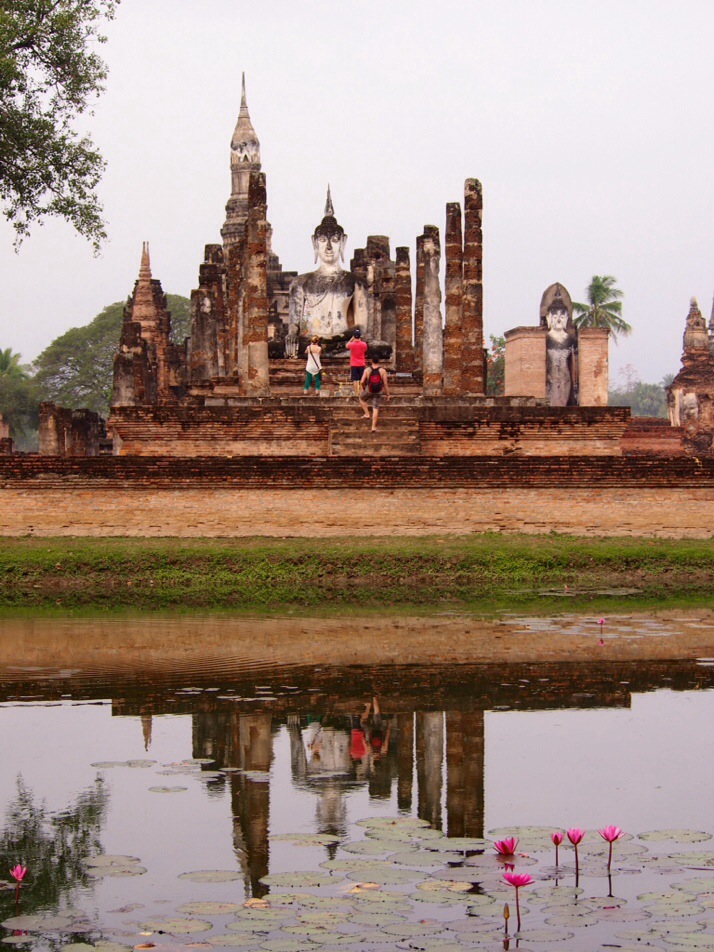 Buddha at Wat Mahathat, Sukhothai
Buddha at Wat Mahathat, Sukhothai
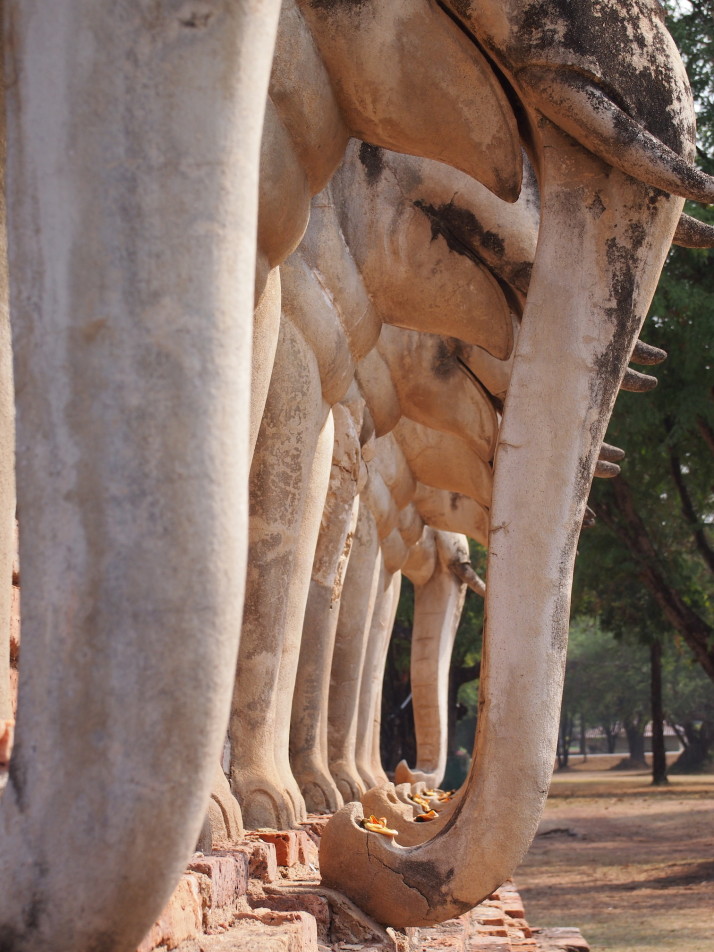 Images of elephants are everywhere in Thailand, including surrounding this chedi at Wat Sorasak, Sukhothai
Images of elephants are everywhere in Thailand, including surrounding this chedi at Wat Sorasak, Sukhothai
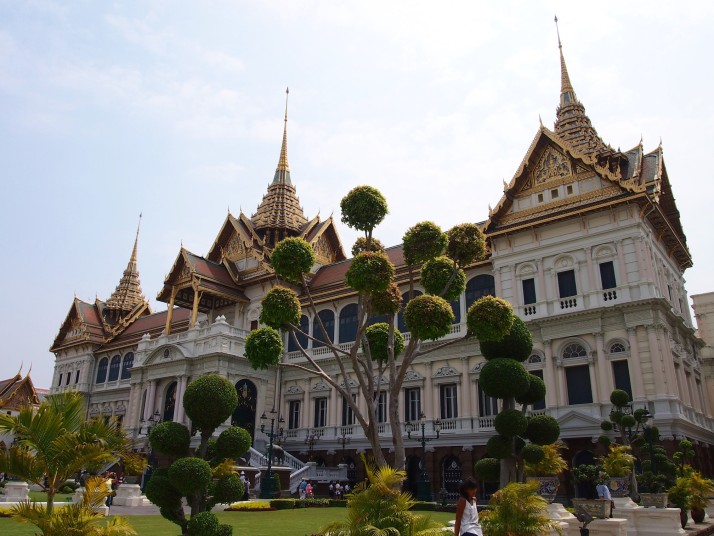 The impressive Grand Palace in Bangkok
The impressive Grand Palace in Bangkok
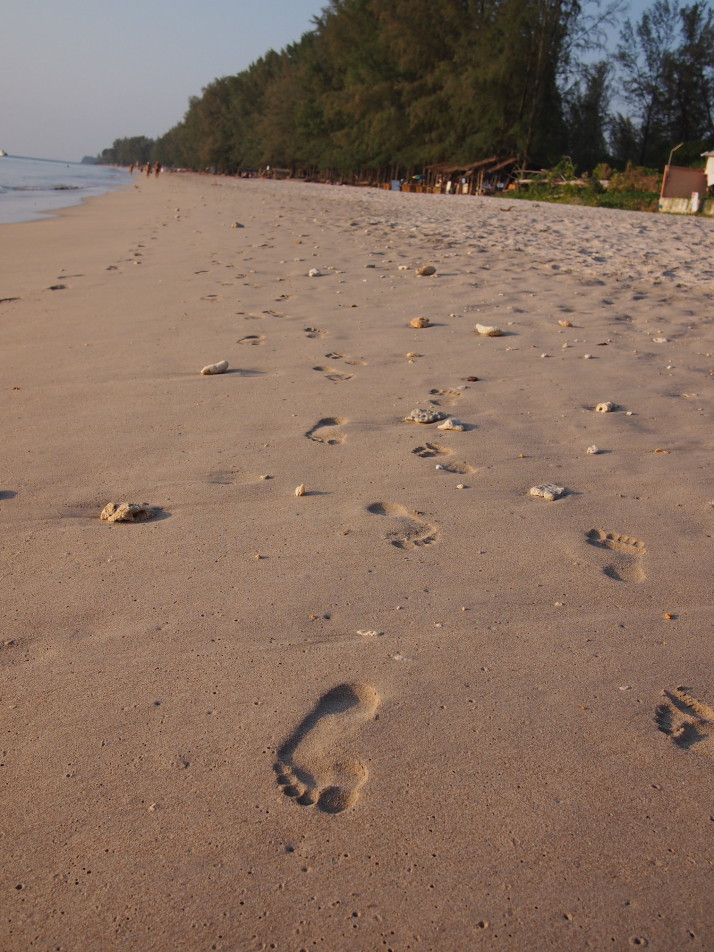 Footsteps on Long Beach, Koh Lanta
Footsteps on Long Beach, Koh Lanta
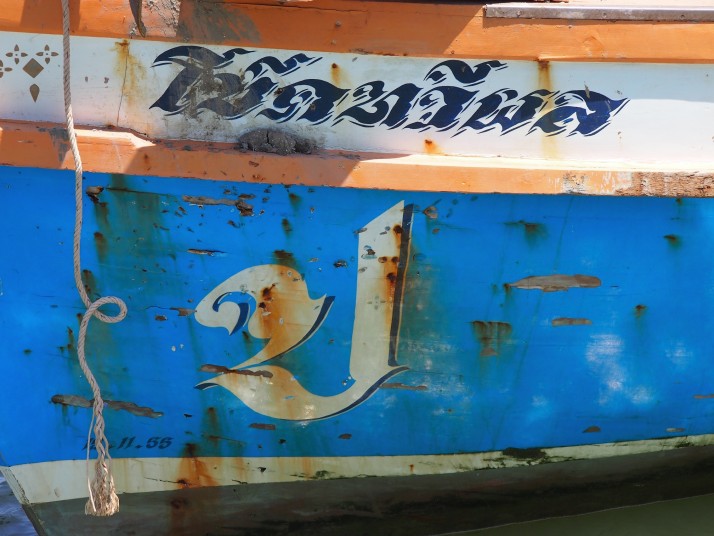 I especially liked this boat detail that I spotted in Koh Lanta’s Old Town as it looks like a J – I assume it’s actually a Thai letter
I especially liked this boat detail that I spotted in Koh Lanta’s Old Town as it looks like a J – I assume it’s actually a Thai letter

 two year trip
two year trip